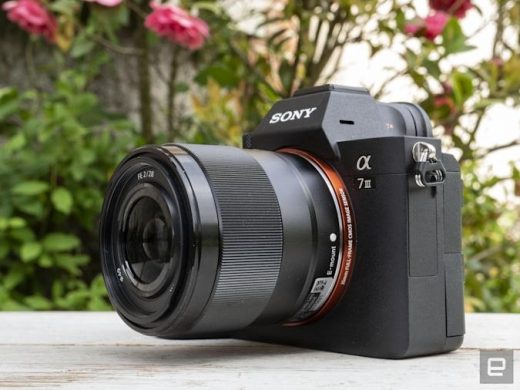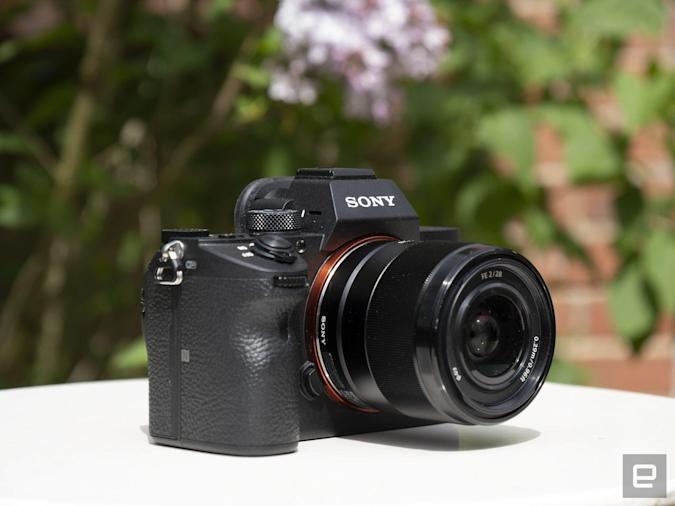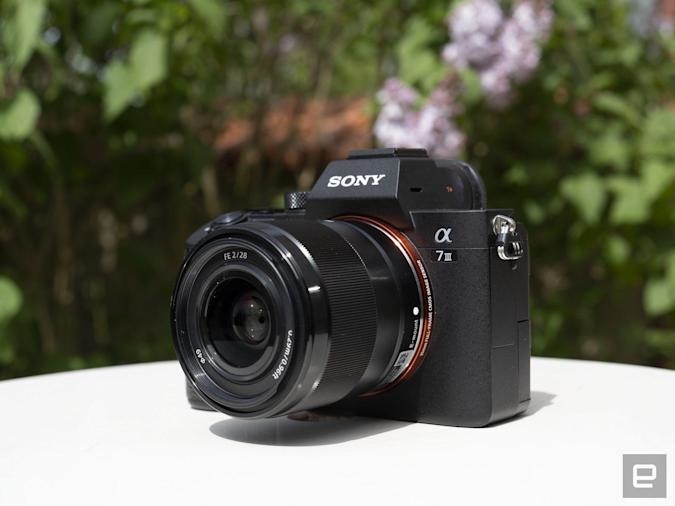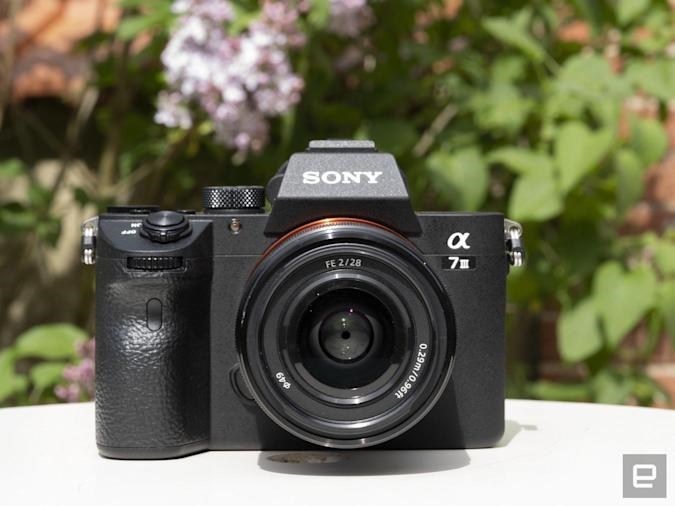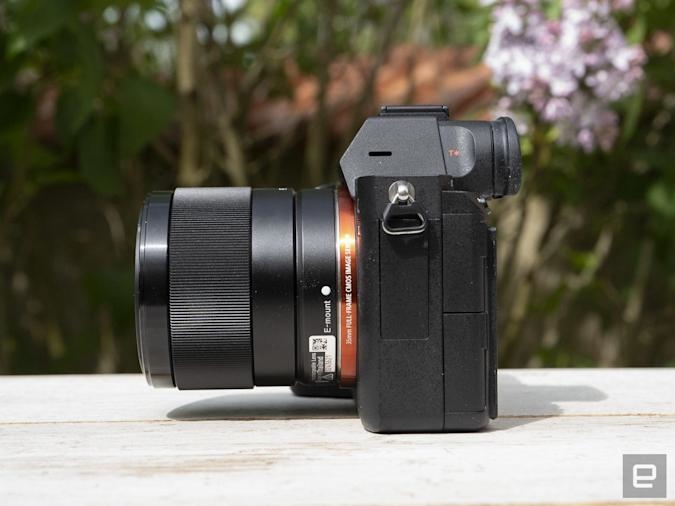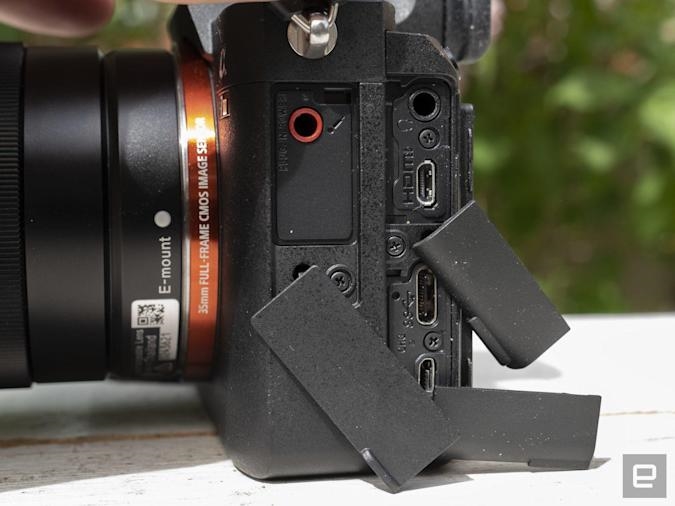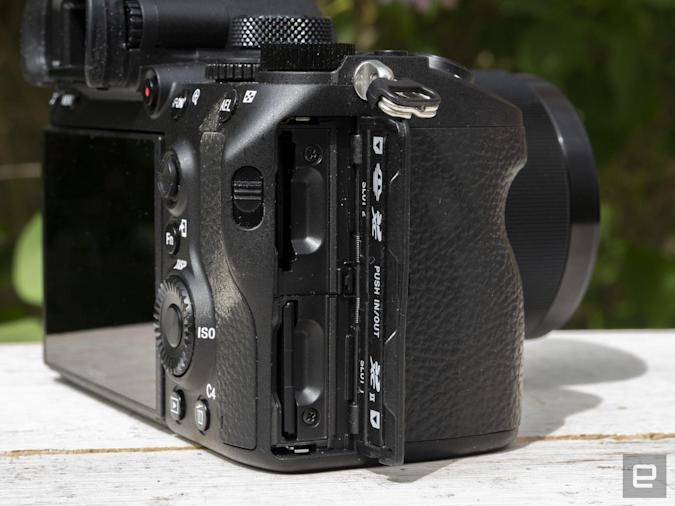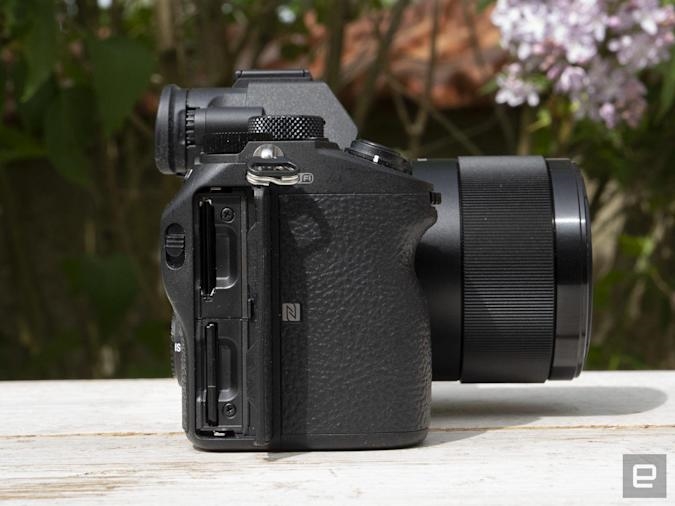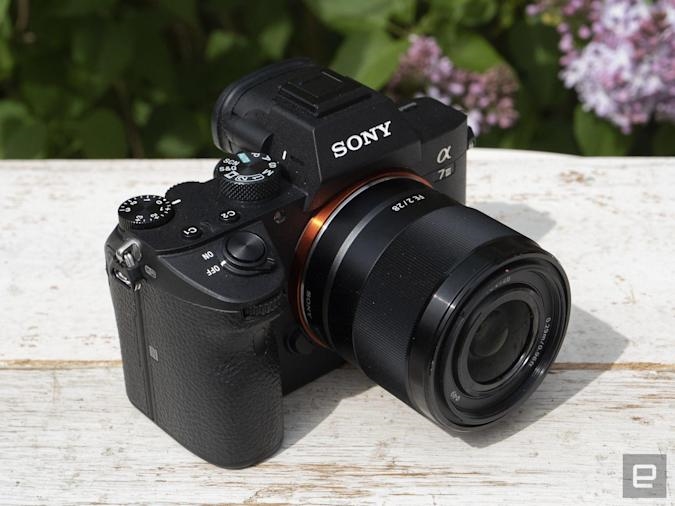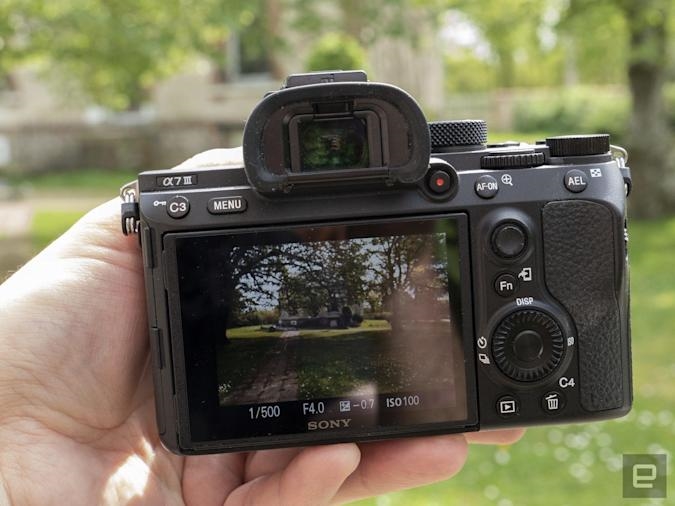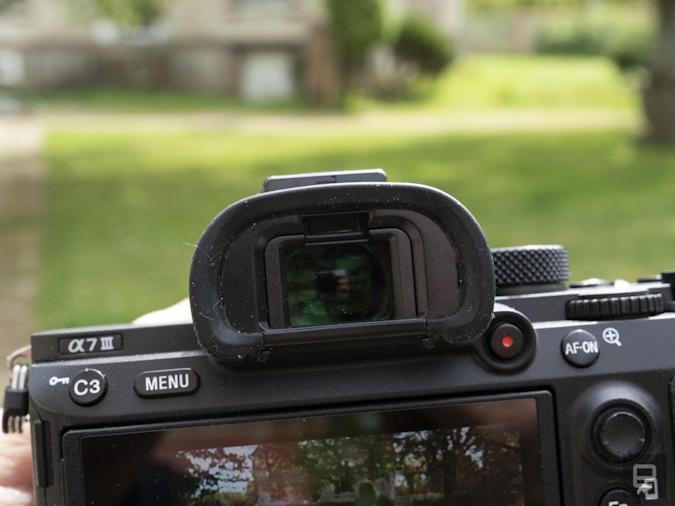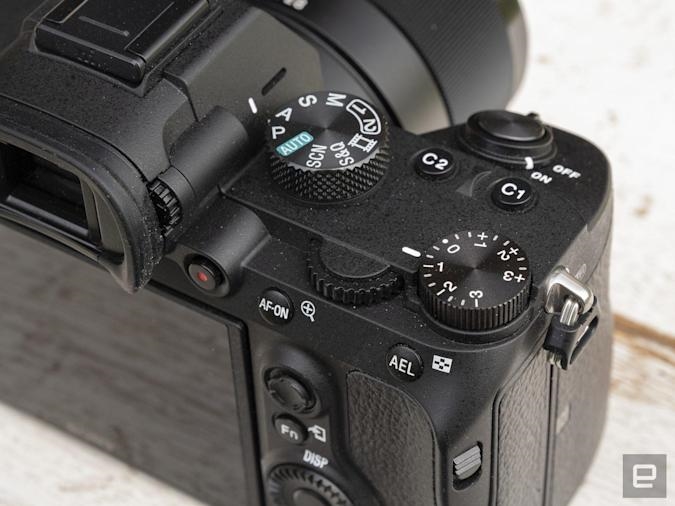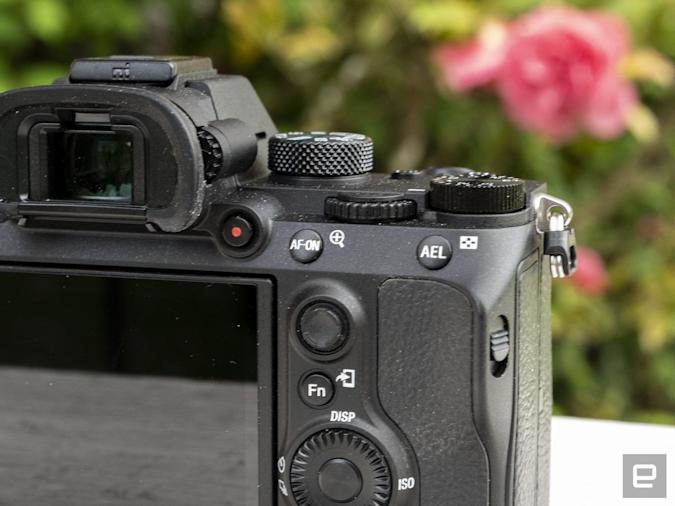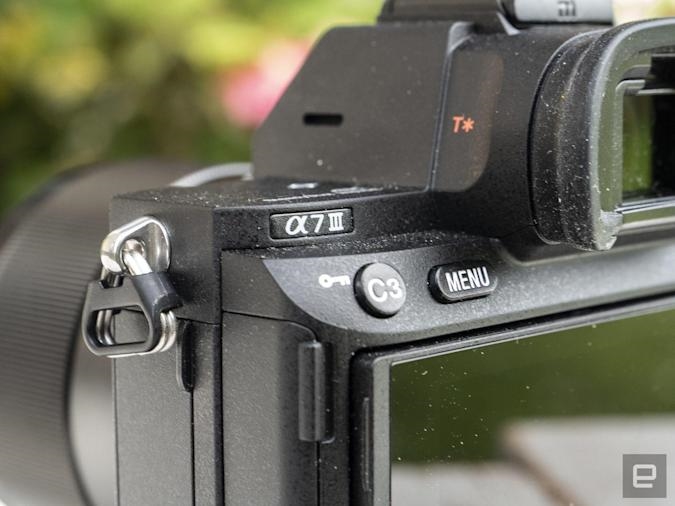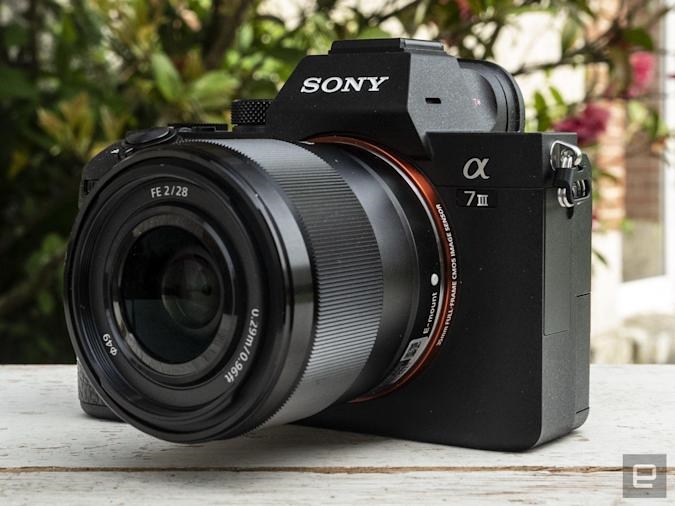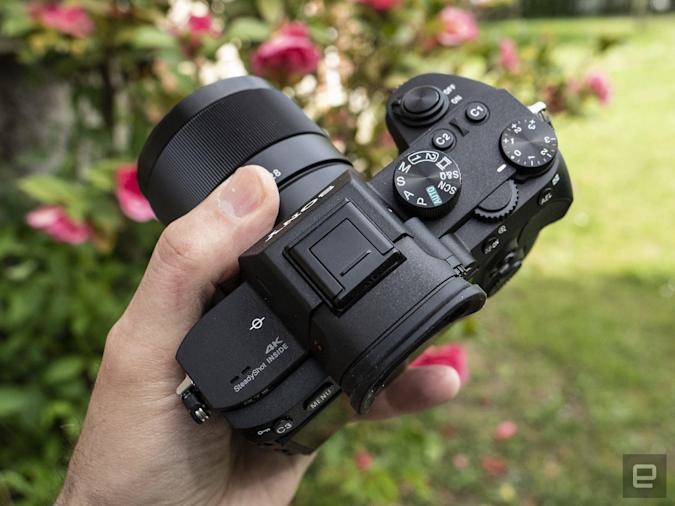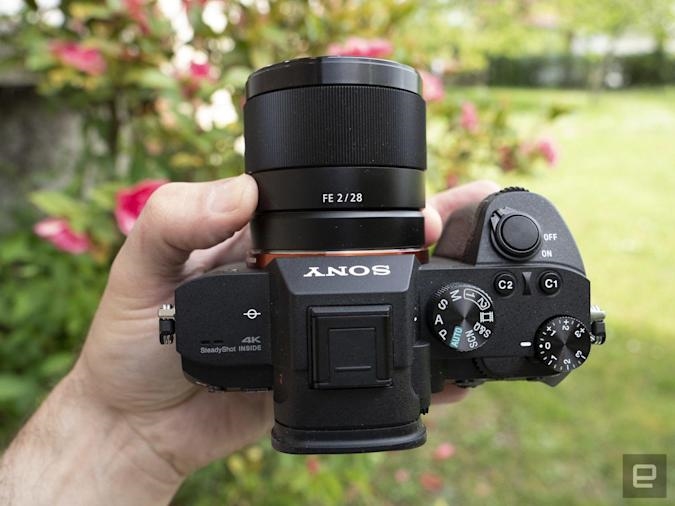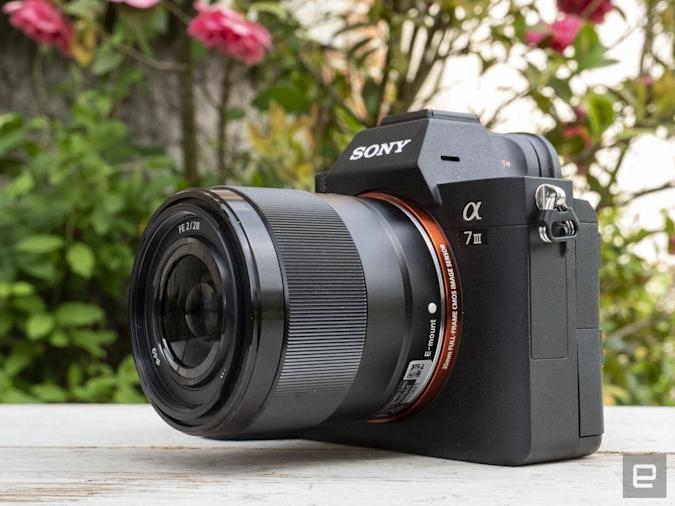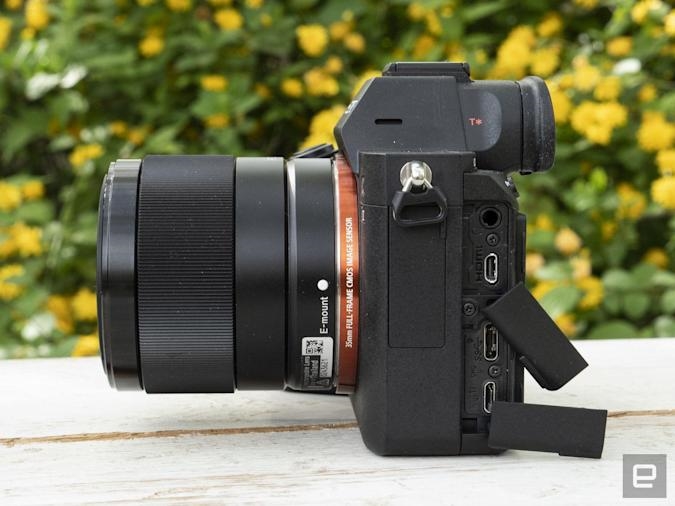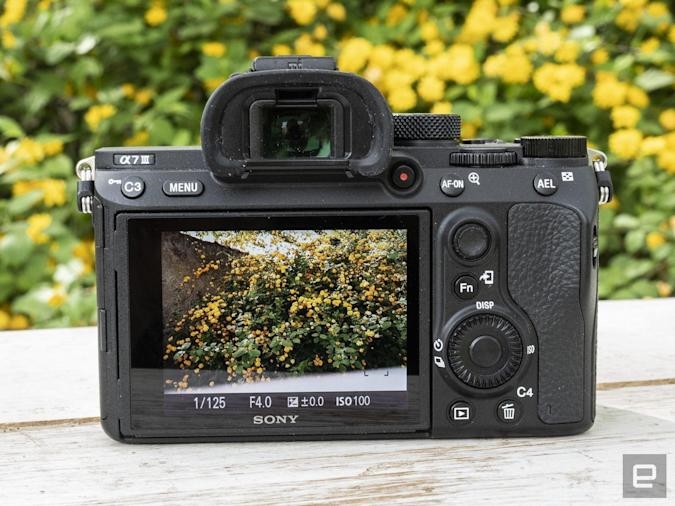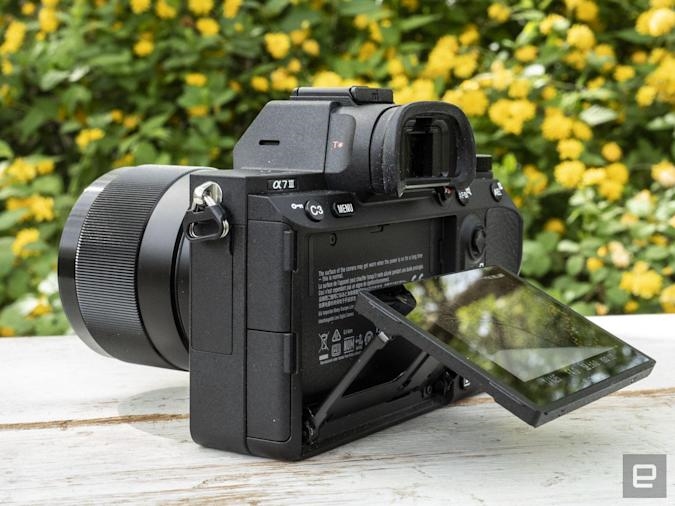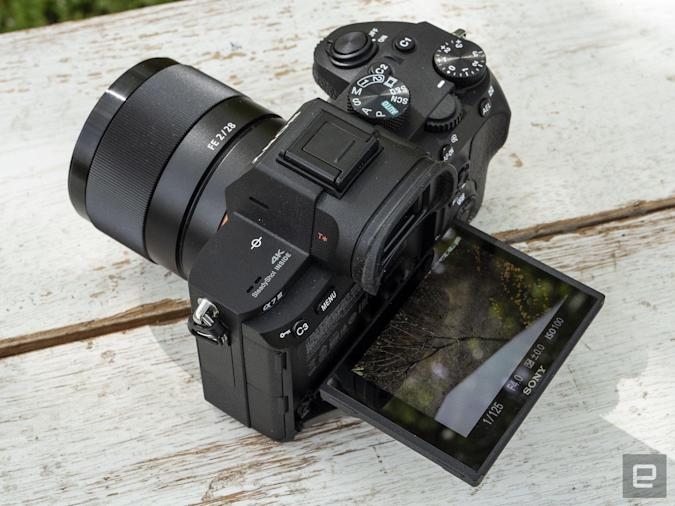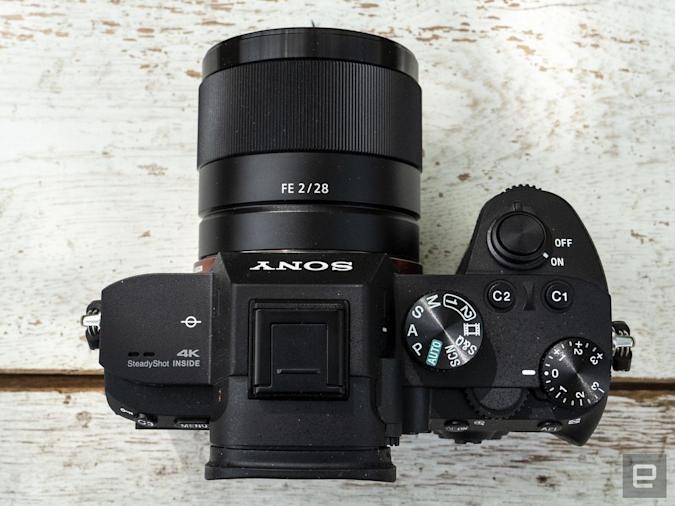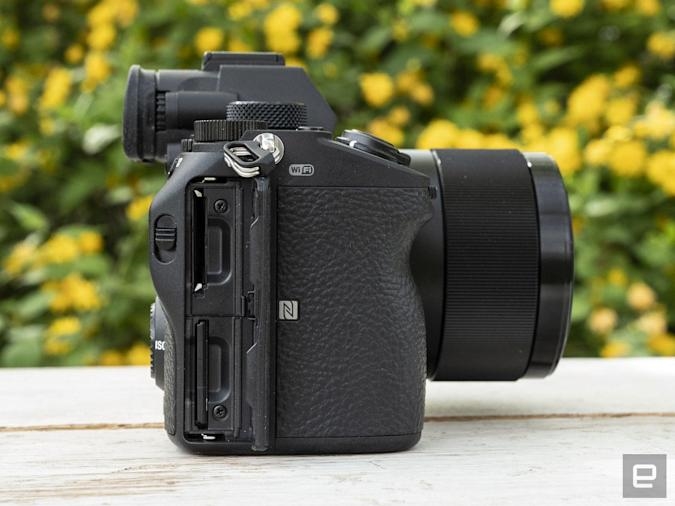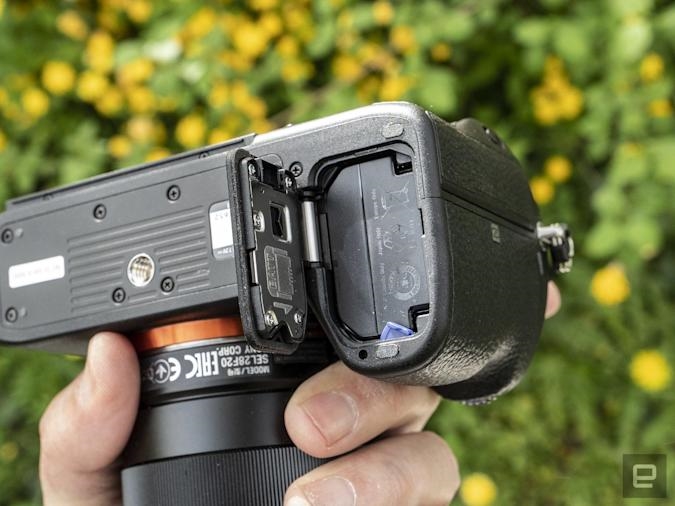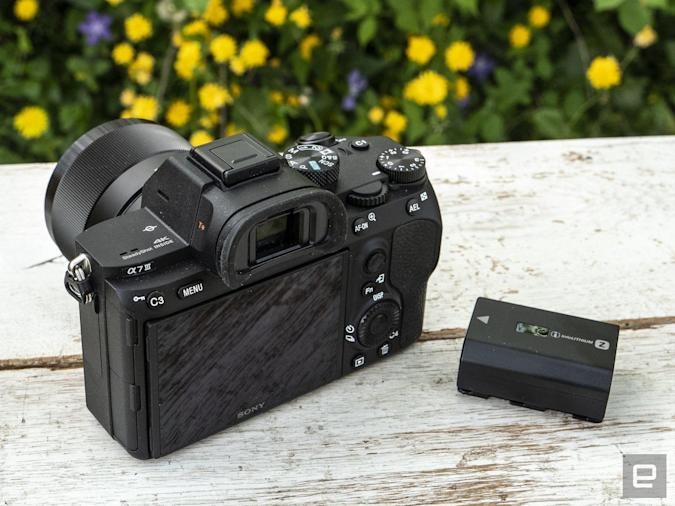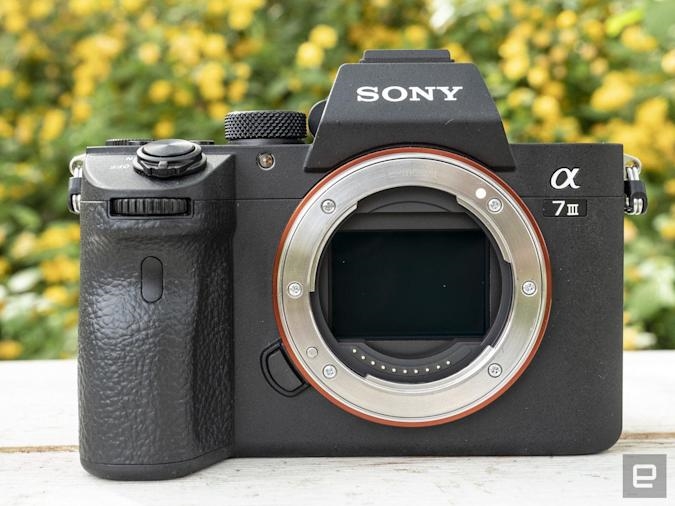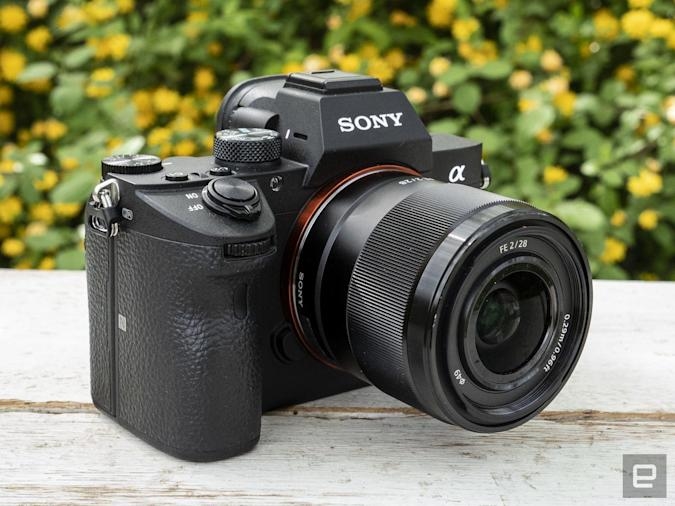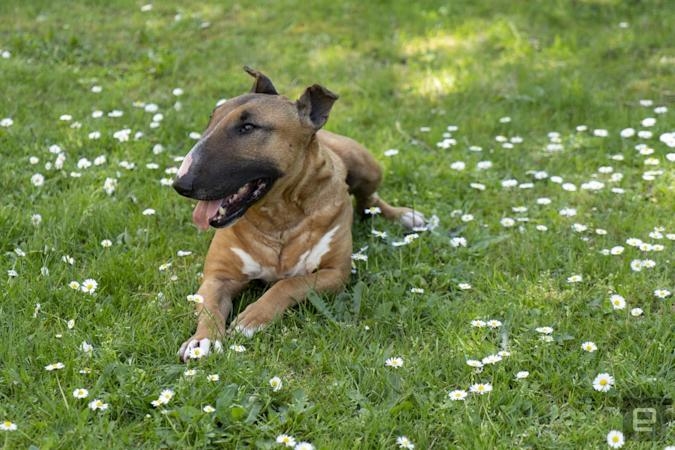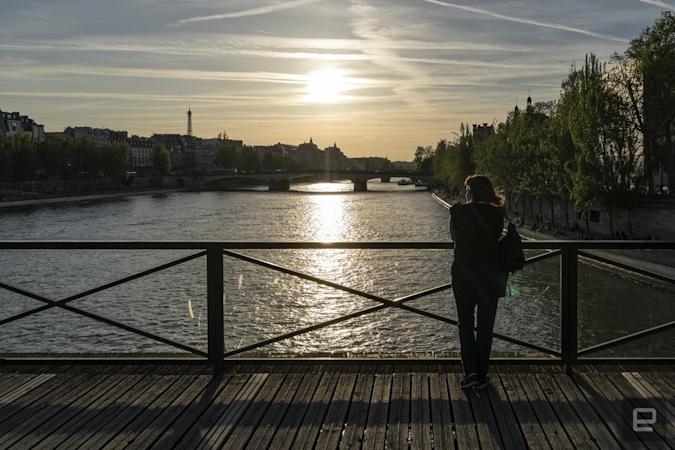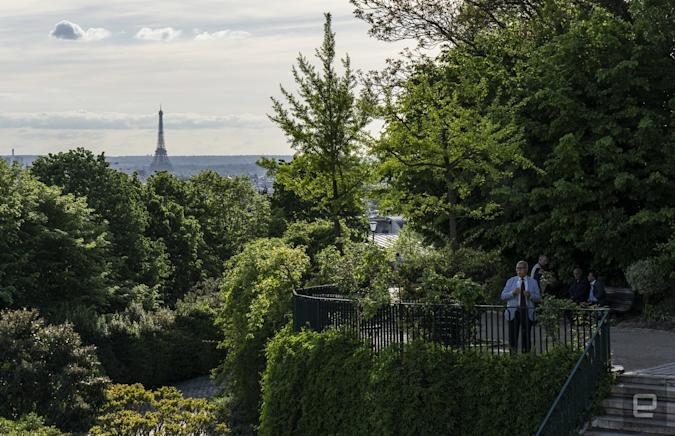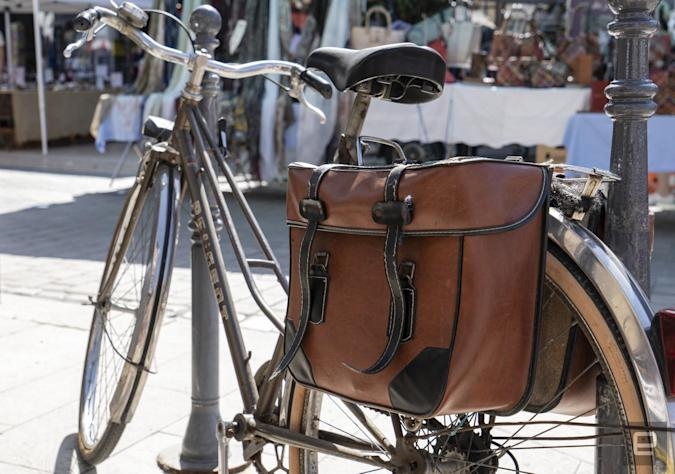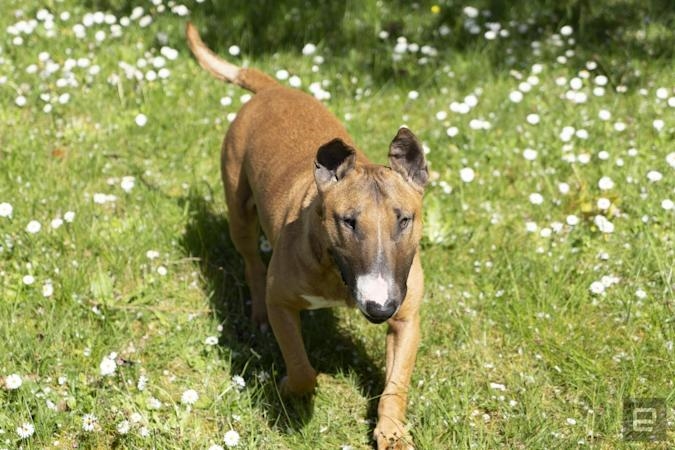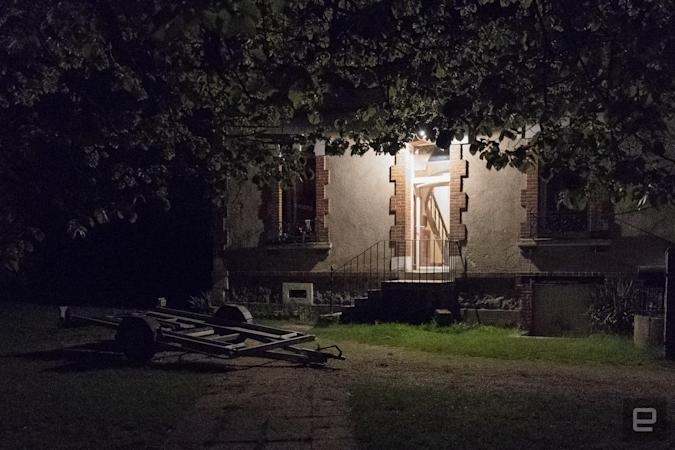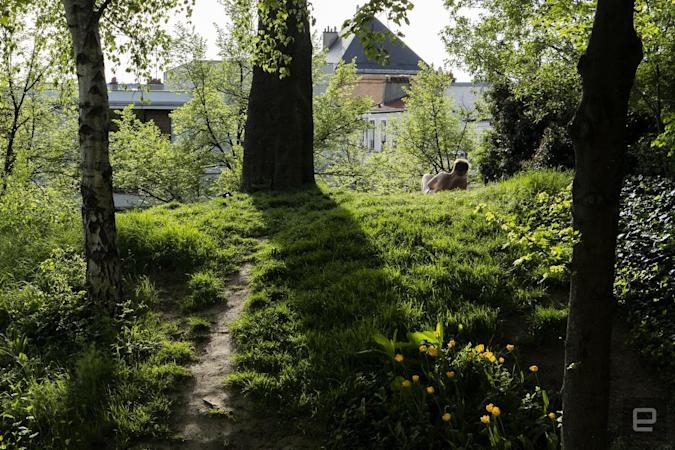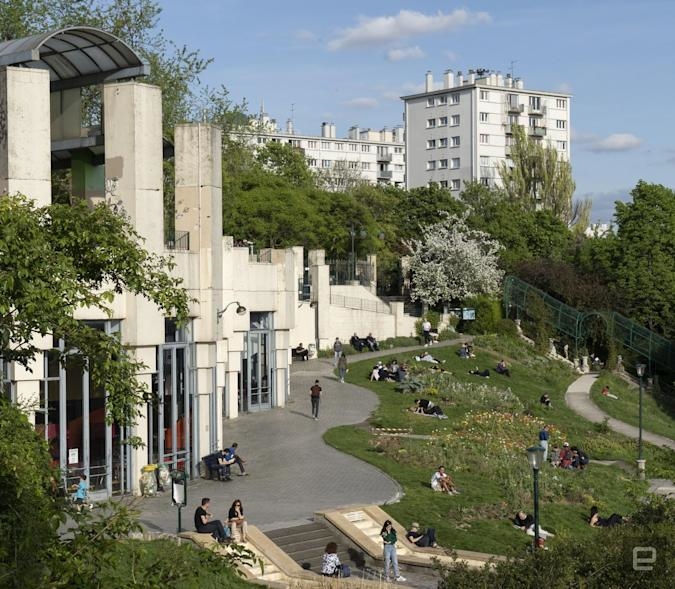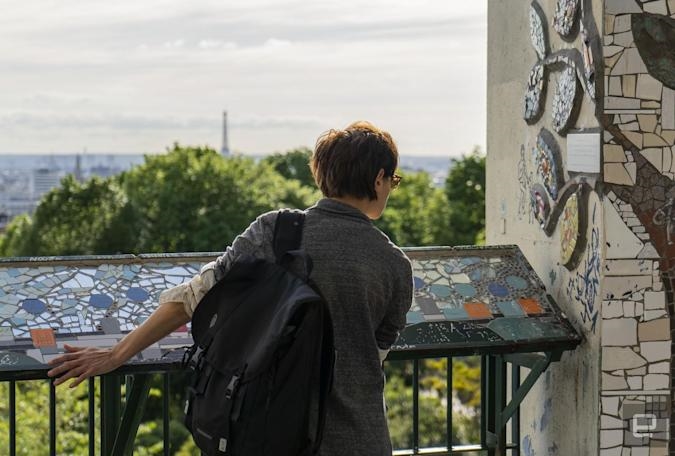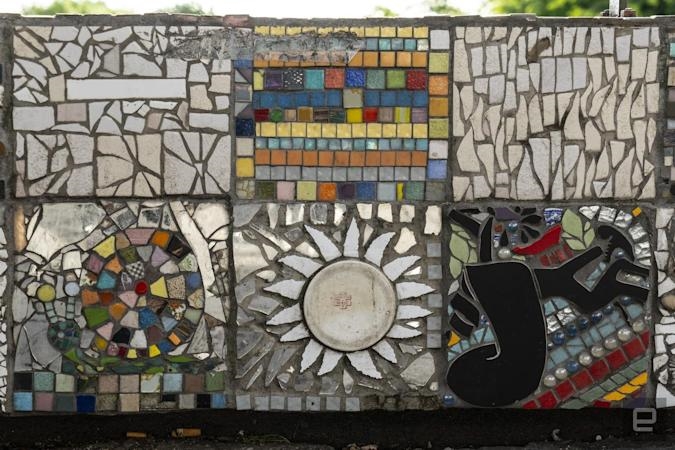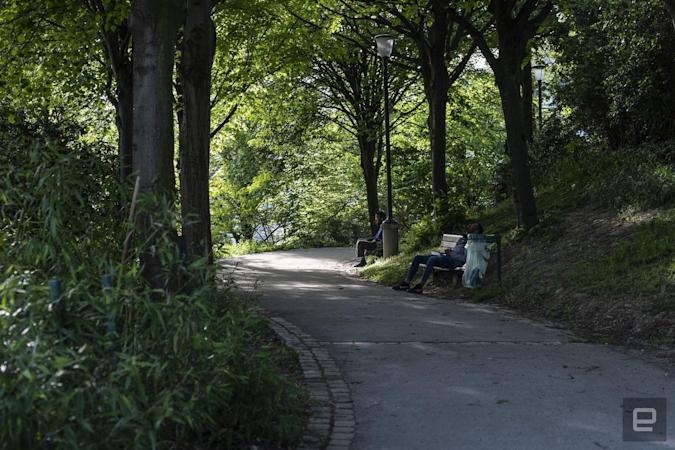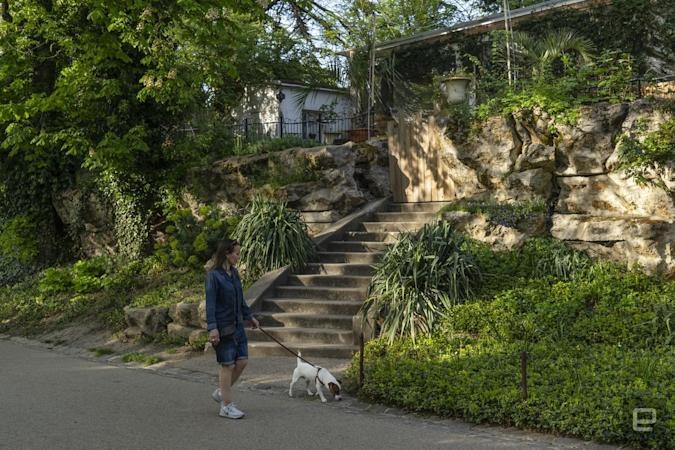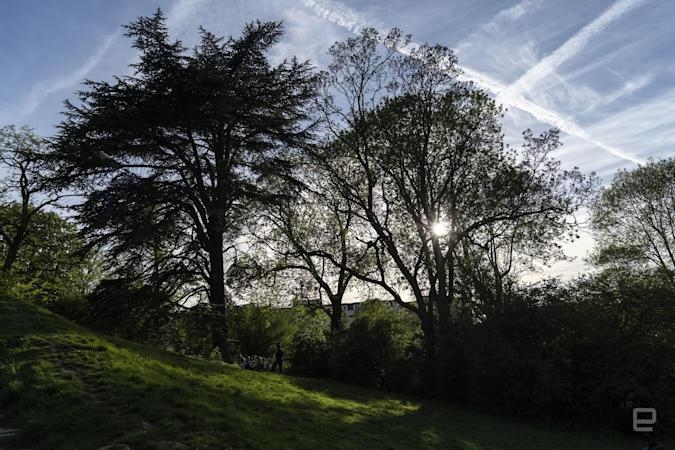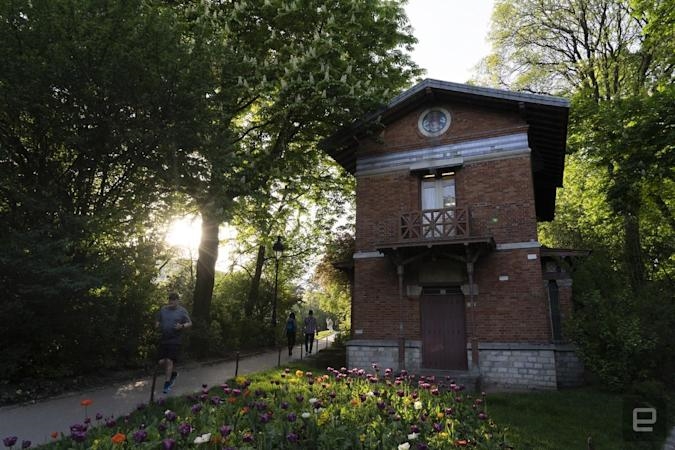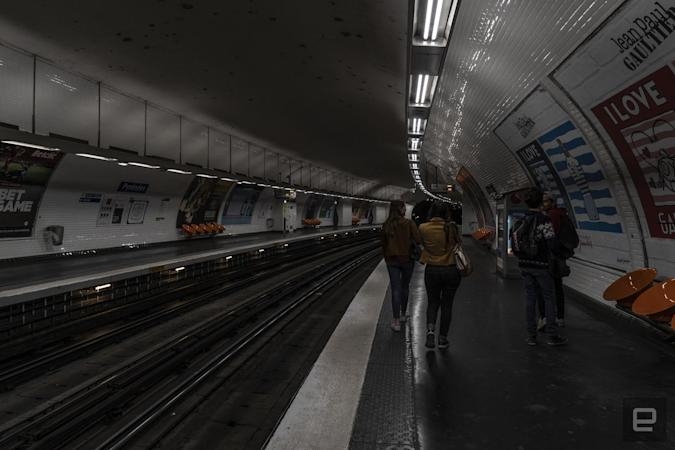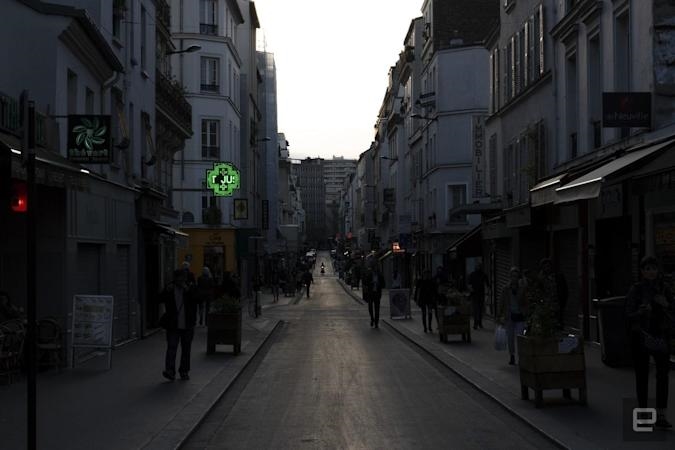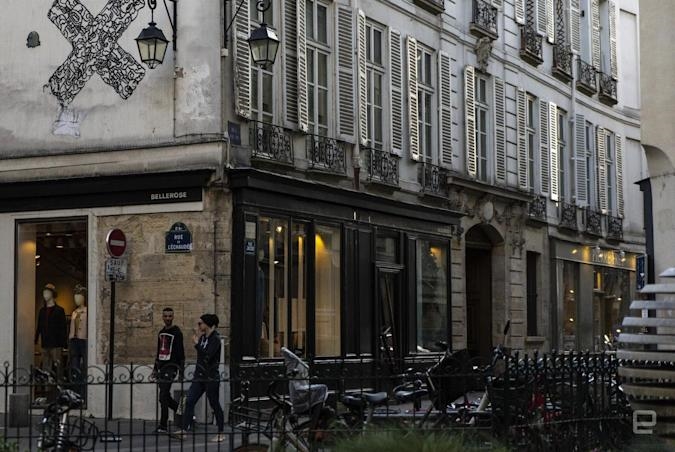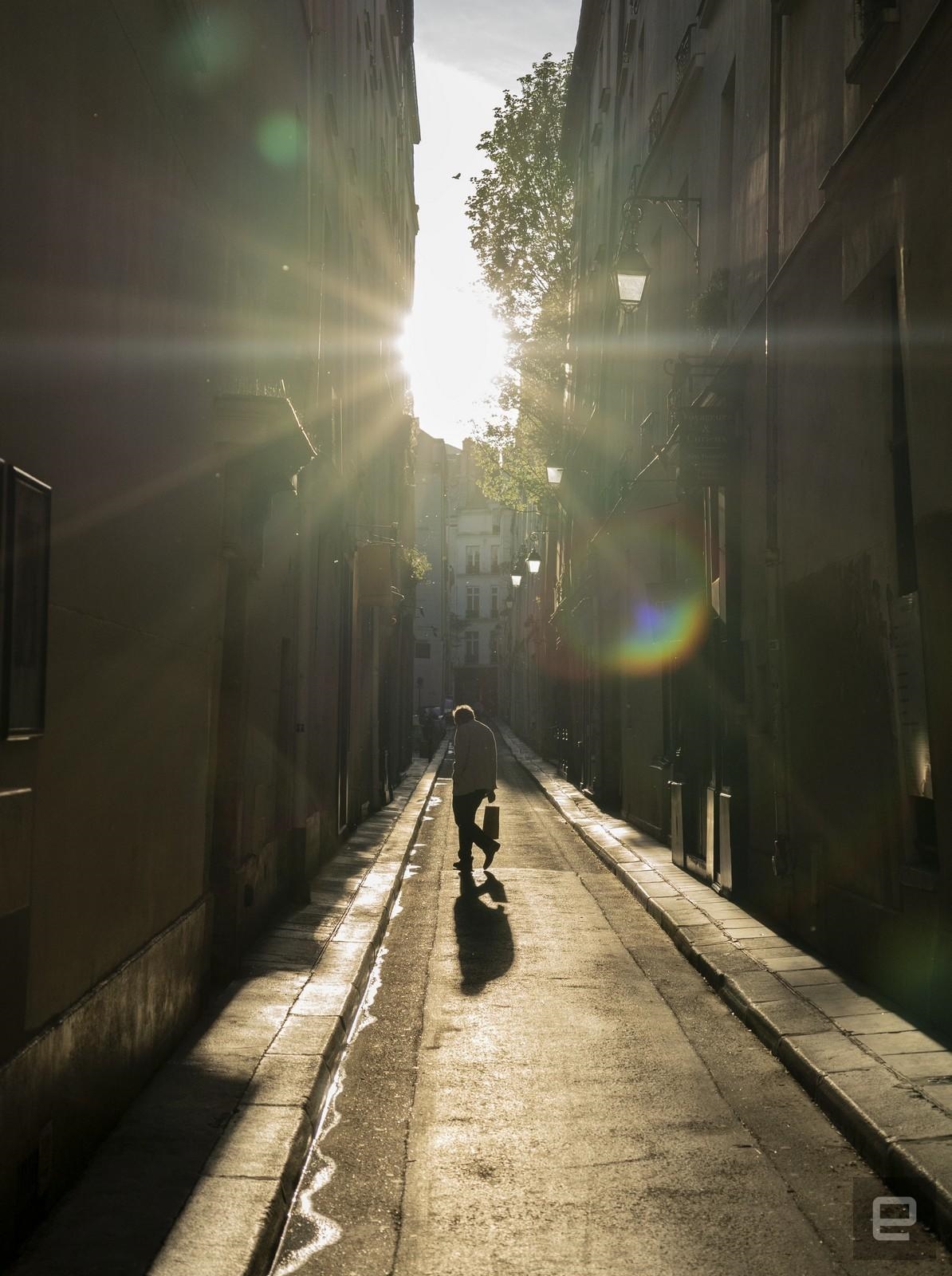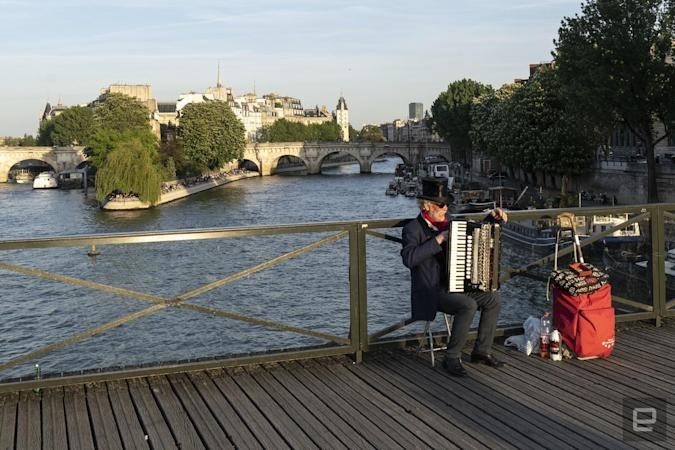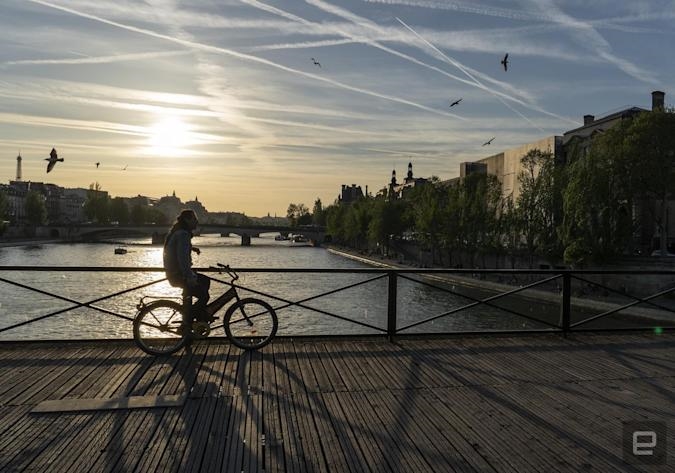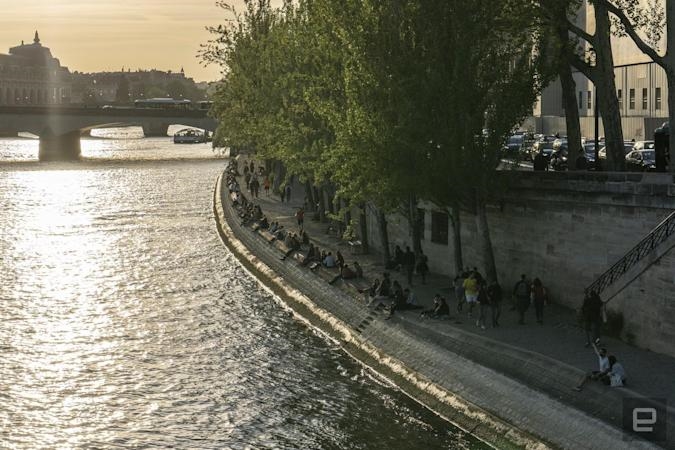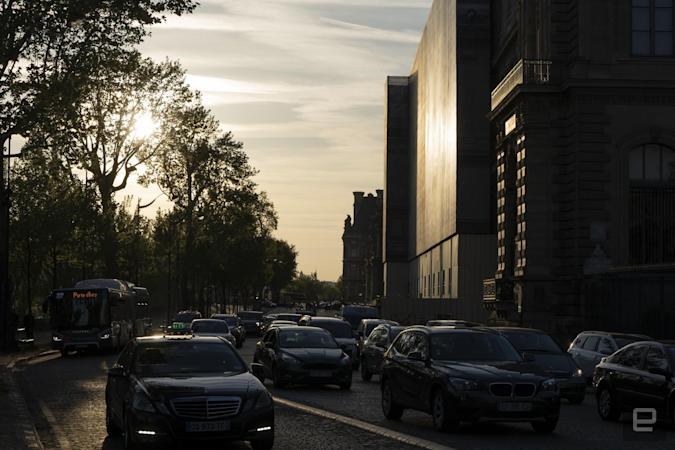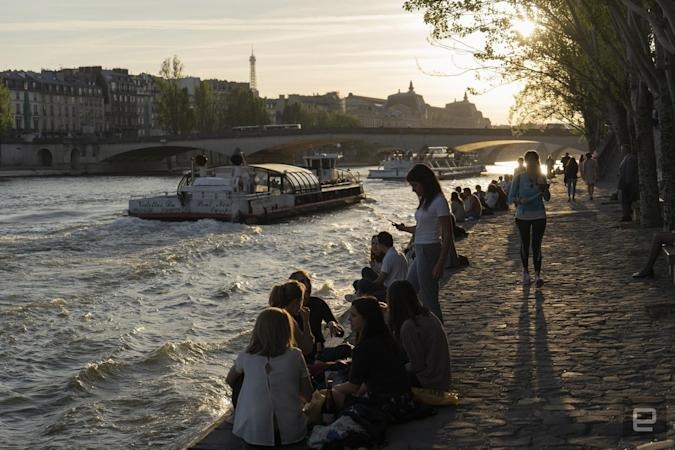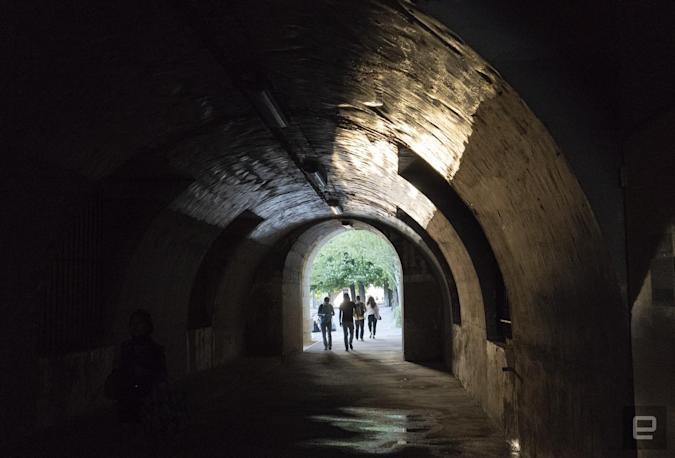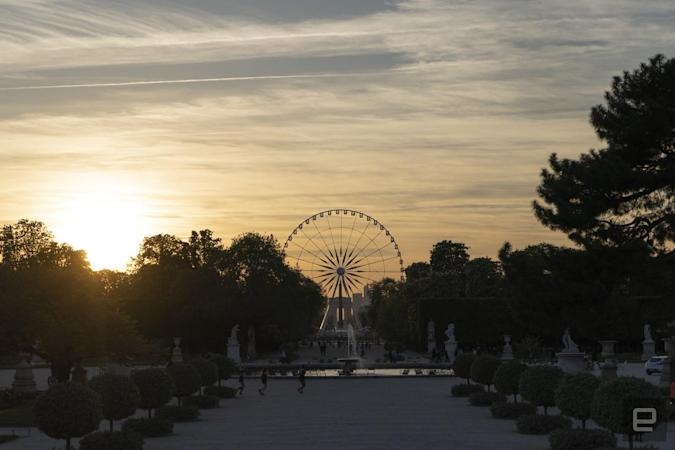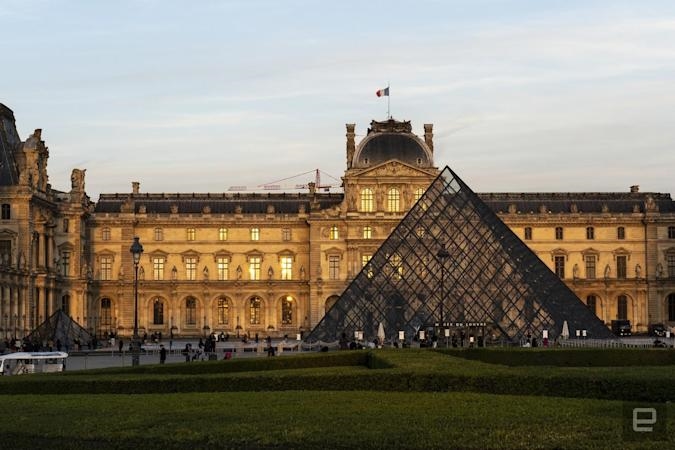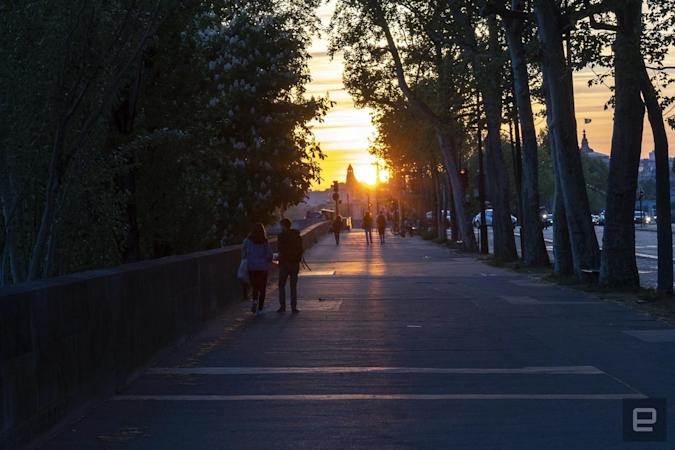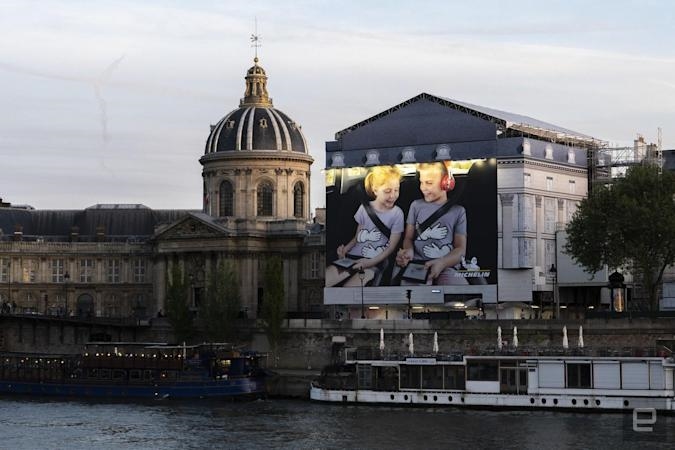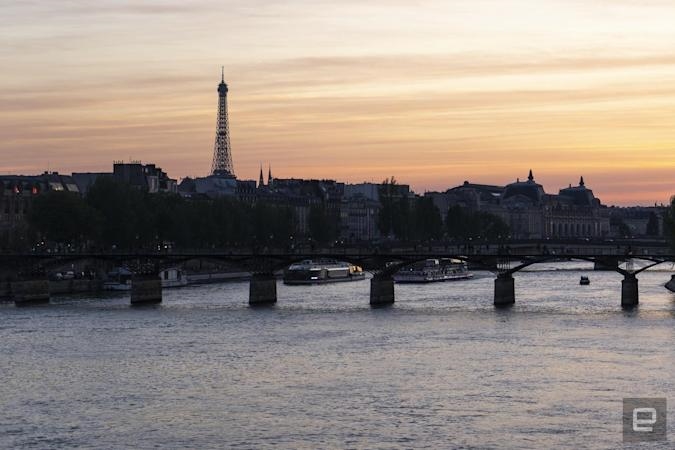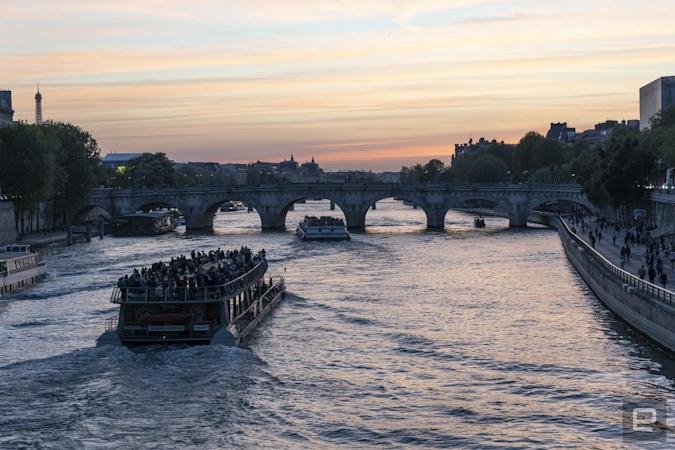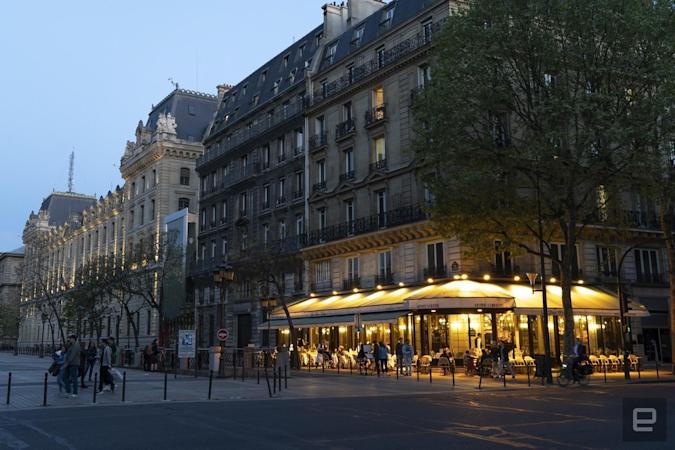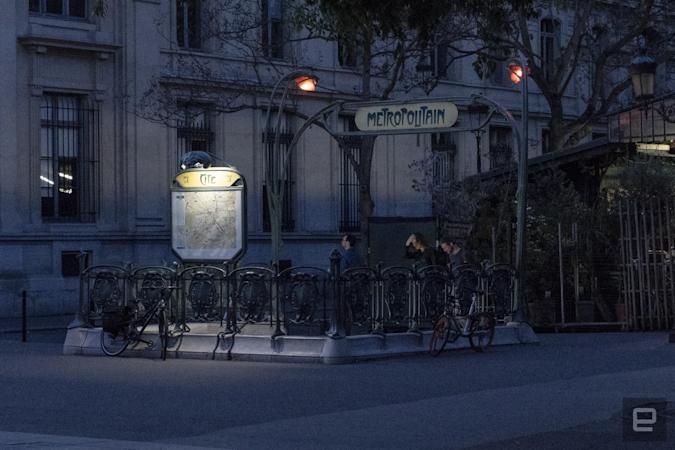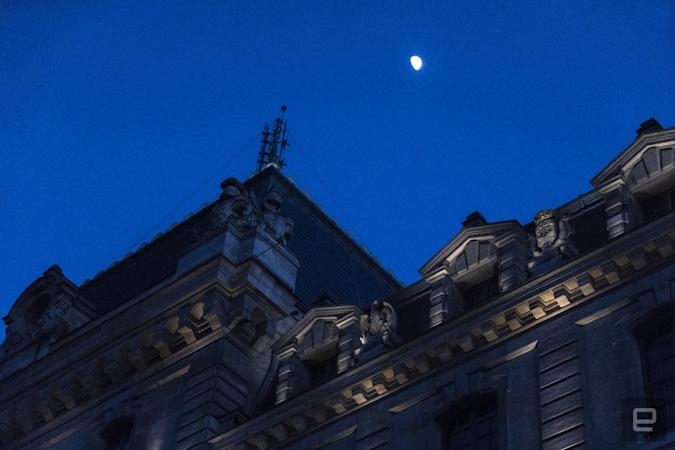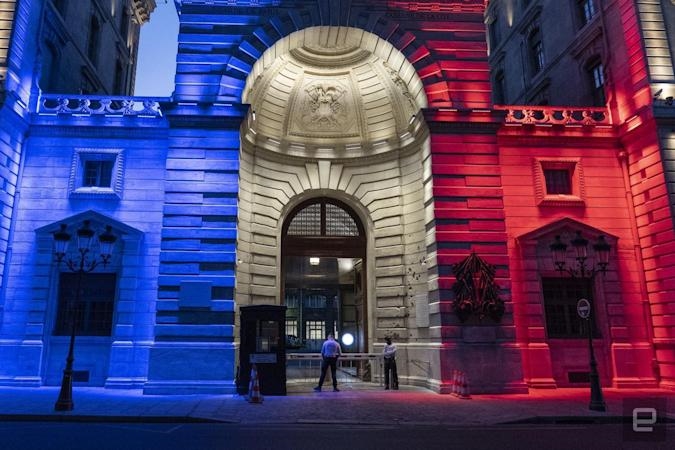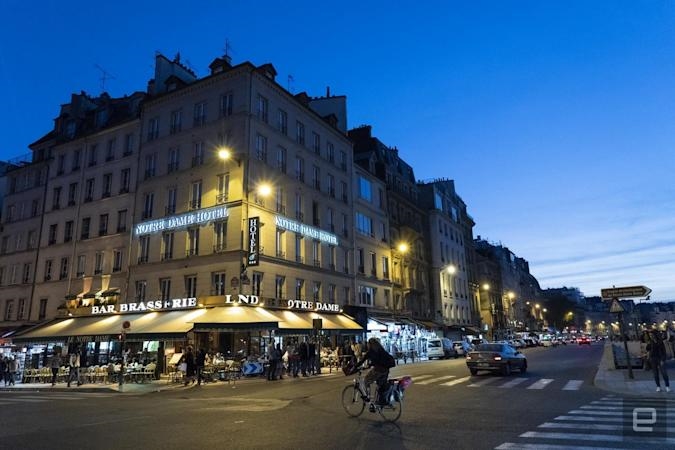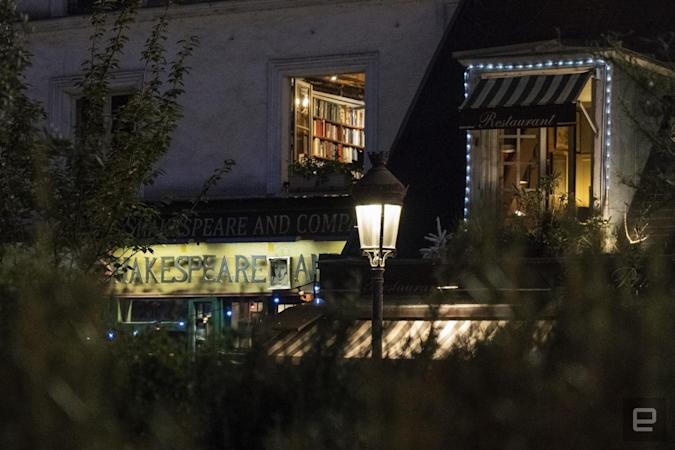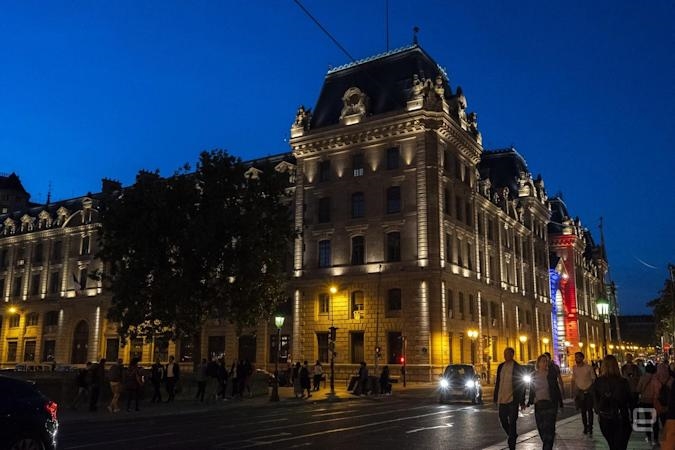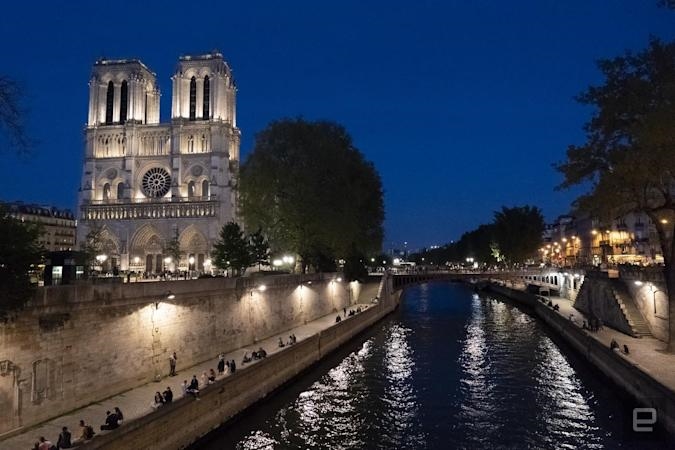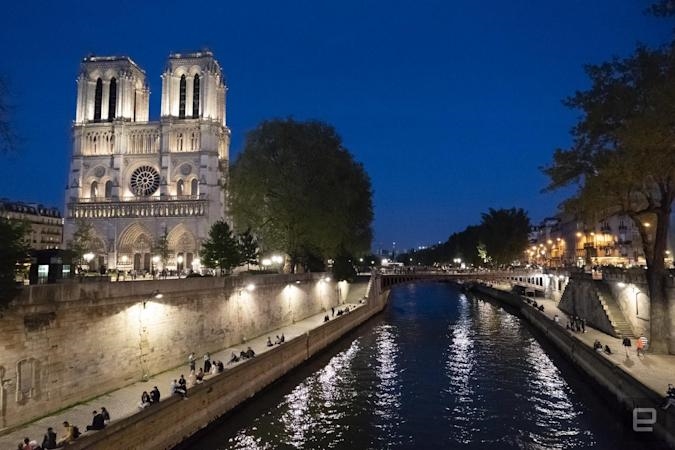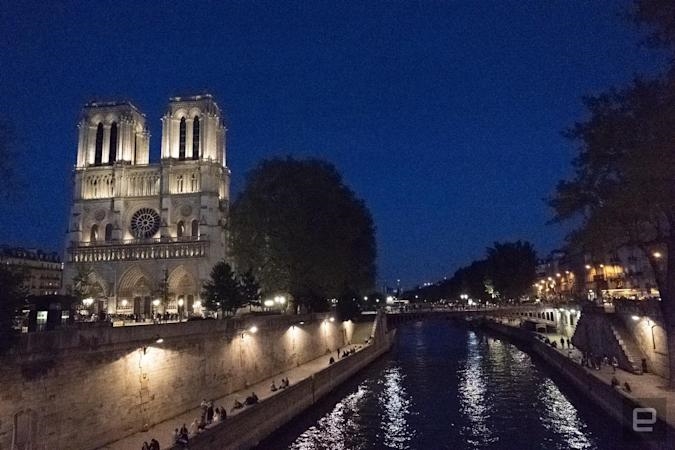Canon EOS R3 review: Innovative eye-control focus and speed, for a price
Sony A7 III review: A peerless full-frame mirrorless camera
For $2,000, you can’t get a better camera, period.

With its latest model, the 24.2-megapixel A7 III, Sony has created a near-perfect all-around camera. It has the best mirrorless autofocus system on the market, sharp, full-frame 4K video, high shooting speeds worthy of a sports camera, and excellent image quality. It’s not perfect, but after trying it for a week, I can say it’s easily the best $2,000 camera you can buy, and it even tops a few more expensive cameras.
A7 III
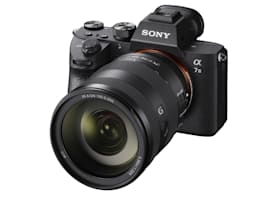
Pros
- Stellar low-light/high ISO capability
- Much-improved handling
- Fast 10 fps shooting
- Excellent autofocus
- Sharpest 4K video of any Sony full-frame camera
- Double the battery life of the last model
Cons
- EVF and viewfinder not quite as good as rivals
- Two SD card slots but only one is high-speed UHS-II
- Not as weather-resistant as the Fujifilm’s X-H1
- No 10-bit video output like Panasonic’s GH5s
Sony camera fans admire the company’s technical excellence, and the A7 III delivers on that. But it’s finally grasping the importance of ergonomics, and the new model lets me shoot more naturally than any camera I’ve tried — let alone any Sony shooter. Like any product, it has a few faults, but the A7 III does everything very well, and blows away all other full-frame rivals.
Body and handling
The A7 III has gained a bit of weight (50 grams) over the last model, but for a full-frame camera, it’s still pretty light. It tips the scale at 650 grams (1.43 pounds), considerably less than the comparably priced, 750-gram Nikon D750 DSLR, for instance. The body has a pleasing heft and a size that’s great for photo shooting and even better for video, where extra weight actually helps with stability.
Gallery: Sony A7 III camera gallery
Those extra grams are well earned, too. The A7 III has a larger, more comfortable grip and a much bigger, 2,280mAh battery than the A7 II, which has a 1,020mAh cell. It’s the same one used in the professional A9 and A7R III cameras, but the A7 III is less power-hungry. As a result, you get 700 shots per charge, the most of any mirrorless camera on the market. In practice, I could shoot for several hours and still have a 70 percent charge — a major improvement over my A7S II.
Sony has finally moved the video record button to a more logical spot next to the electronic viewfinder, rather than on the right side, as before, where it’s hard to find by feel. It also added a much-needed joystick, making it possible to change the focus area while looking through the electronic viewfinder (EVF).
The quality and layout of other buttons have been subtly changed, with slightly larger dials for aperture, shutter speed, back jog and exposure compensation. The programmable C3 button was moved to the back to make room for the video record button, and there are now 13 customizable buttons, making it easy to change preferred settings without diving into menus.
Speaking of which, Sony has improved the menu system on the A7 III, matching what it has on the A9. It’s still occasionally hard to find important settings, but the system is a heck of a lot better than it used to be and nearly on par with Fujifilm’s excellent X-series menu system.
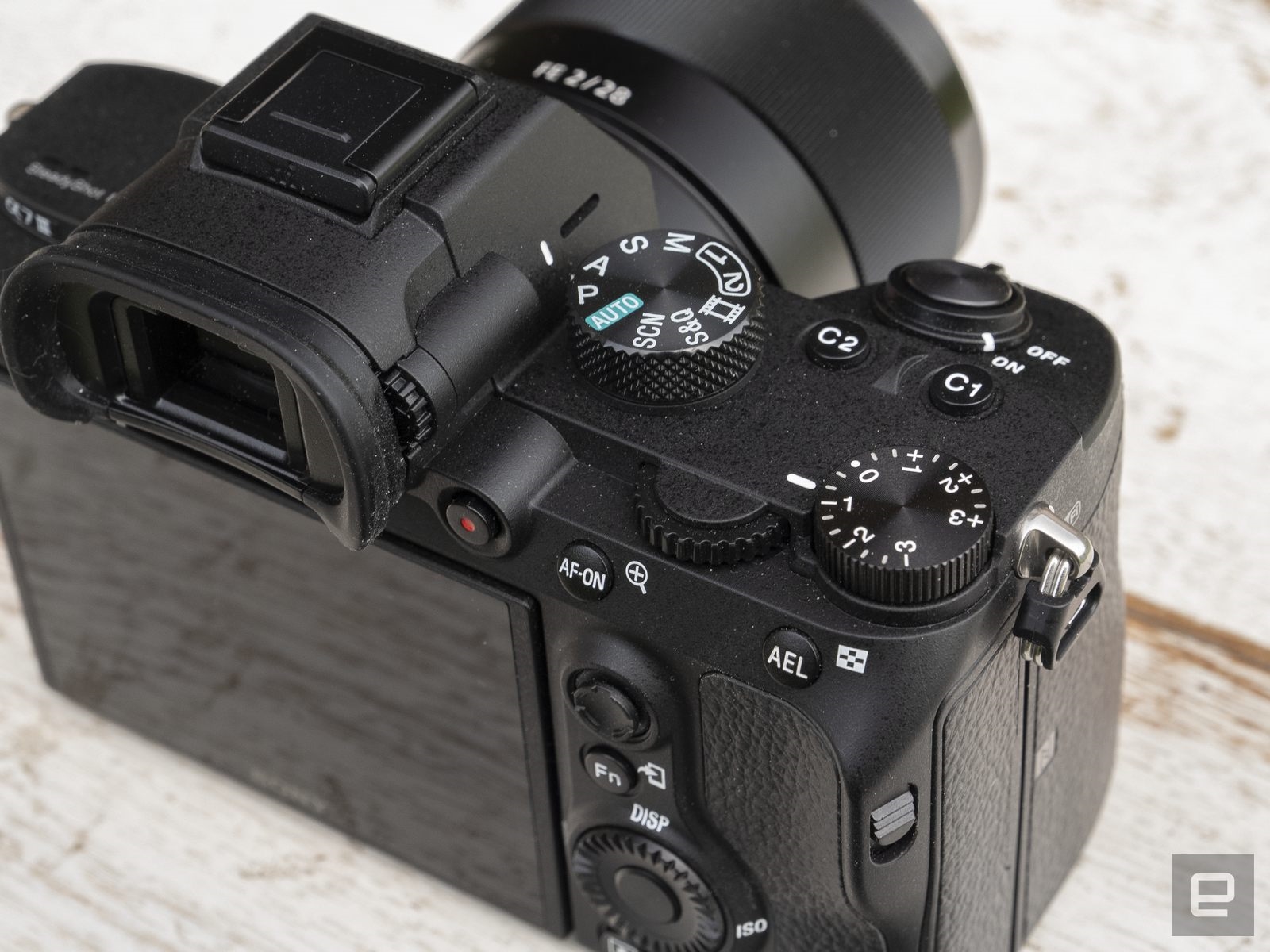
The higher-resolution A7R III has a brilliant new 3.69-million-dot OLED electronic viewfinder, but the A7 III’s EVF is the same as before, with 2.36 million dots. That’s not surprising, considering it costs $1,200 less, but the problem is that similarly priced rivals, the Fujifilm X-H1 and Panasonic GH5s, both have similar, higher-resolution 3.69-million-dot EVFs.
Sony did increase the magnification on the A7 III’s EVF a bit, but that just makes the lower resolution more obvious. It was, however, quite responsive, activating quickly when I put my eye to it.
The rear display has touch capability, but you can use it only to change focus. That’s unlike the touchscreens on the aforementioned X-H1 and GH5, which also let you tweak menu settings. The new display is a bit dimmer than its predecessor’s, so it can be tricky to use in sunlight, even at maximum brightness. As with all other Sony mirrorless cameras, the display only tilts and doesn’t flip around — unlike on the GH5s and certain Canon DSLRs — so it’s not very useful for vloggers who like to shoot that way.
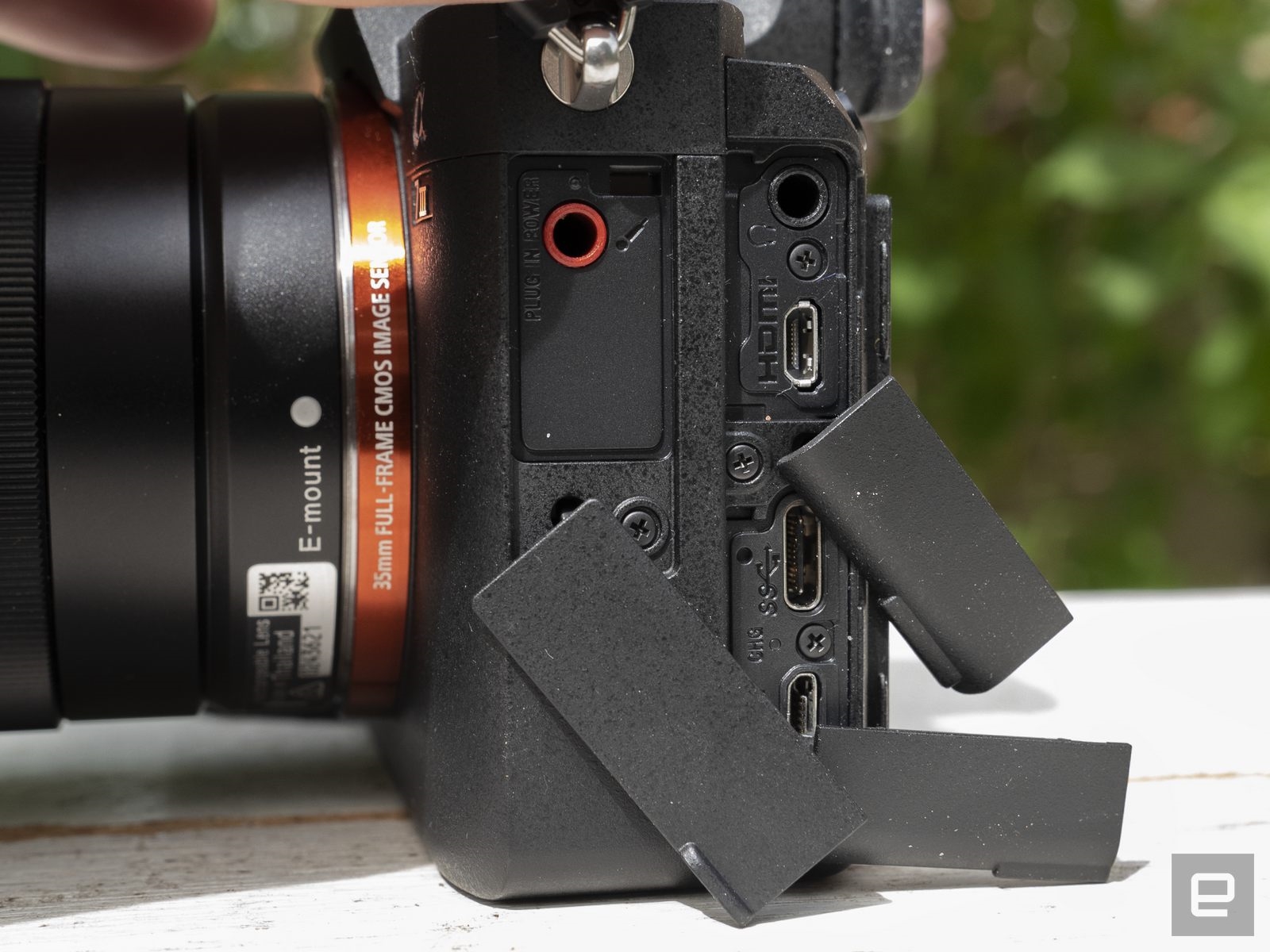
The A7 III has a great complement of ports, including USB 3.1 Gen 1 (Type C), micro-USB, PC interface, HDMI micro, and 3.5mm headphone and microphone ports. The latter are a big selling point of the entire A7 series, as most mirrorless cameras — including Sony’s otherwise excellent A6500 — don’t have a headphone port, which is crucial for ensuring audio quality when shooting video.
As with the A7R III, the A7 III now has two SD card slots, but only one of them supports UHS-II. That’s a weird choice, because you’ll need to spend big bucks on a card if you want UHS-II speeds, but you won’t get them when it’s inserted into the non-UHS-II slot.
As for wireless control and image transfers, the A7 III comes with NFC, WiFi and Bluetooth 4.1, making it relatively easy to sync your smartphone. You’ll need to install PlayMemories mobile on your device, but that app doesn’t always connect reliably to your phone and is a bit laggy. To be fair, that criticism applies to nearly every other camera brand, too.
The net effect of all the changes on the A7 III’s handling is more than you might except. Sony’s new camera has the best ergonomics of any mirrorless camera I’ve tried — after a short time with it, I could just shoot without thinking about how to change a single setting.
Performance
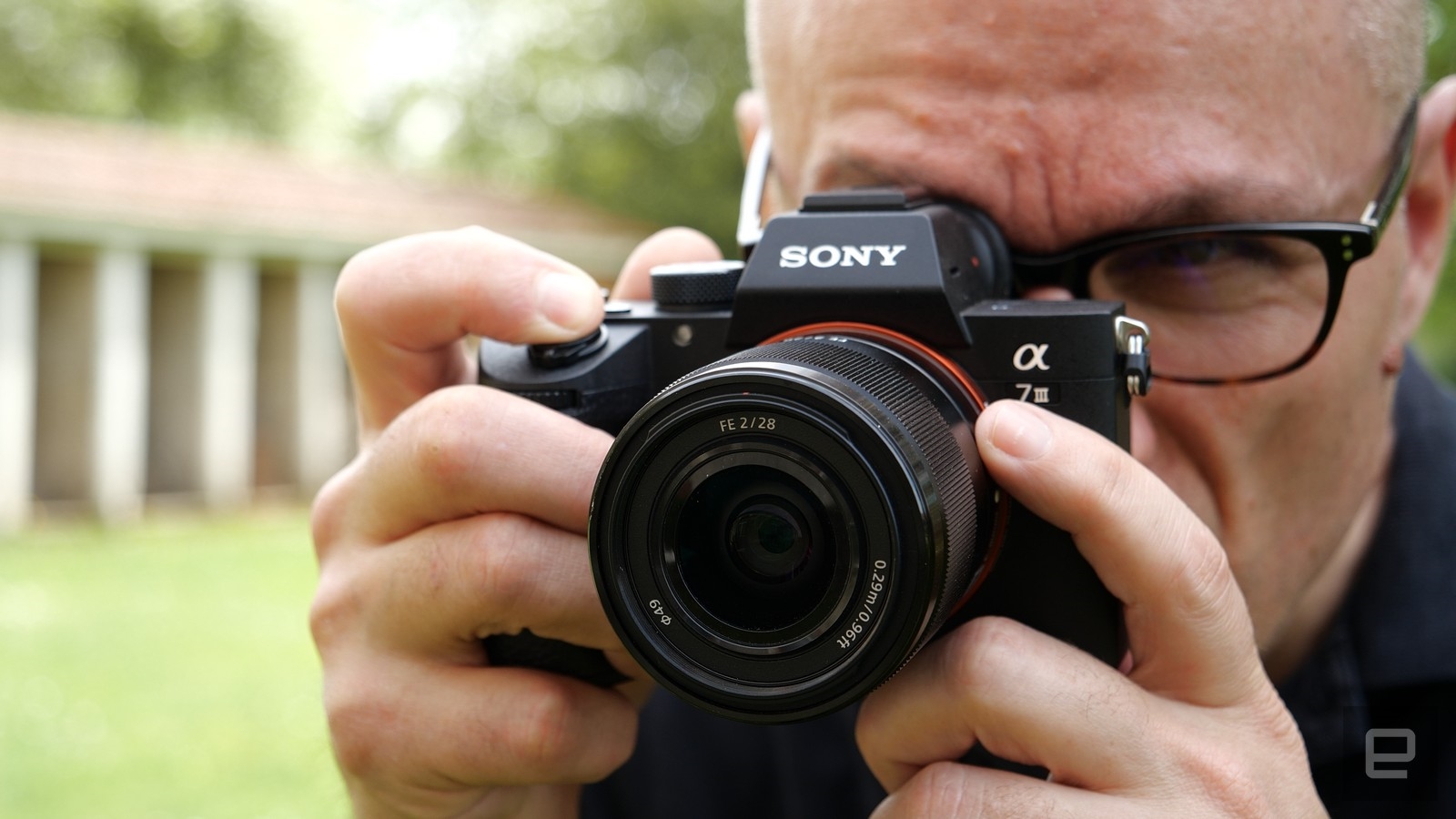
Technically, the Sony A7 III is a dream on paper, but the proof is in the shooting. Let’s start with autofocus. The A7 III can fire bursts for a long time at high speeds (10 fps for up to 9 seconds in compressed RAW mode), but that doesn’t do you much good if the focus can’t keep up. The new model has 693 phase-detection points and 425 for contrast detection, a huge increase over the 117/25-point phase-detect/contrast-detect AF system on the A7 II.
Using a Zeiss 24–70 f/4.0 zoom lens with the aperture wide open, I shot bursts of our bull terrier Harpo tearing around the yard at full speed. Using the center and flexible spot autofocus, it yielded an impressive hit rate for usably sharp images. That improved when I selected the “lock on autofocus” option, which allows you to first select a subject and have the system track it automatically.
All the other modes (area, zone, extended flexible spot, etc.) also worked great. Sony’s eye-tracking autofocus (activated by pressing and holding the center “select” button) is uncanny, locking onto a subject’s eyes (including the dog’s), even when they move around a lot. For most scenes, that means your subject’s face will always be in focus.
Sony’s autofocus system is deep and powerful, but my complaint is the steep learning curve to understanding and mastering it. For the next version, Sony might want to simplify the settings to reduce menu diving. Suffice it to say, if you want to get the most out of this camera, you’re going to have to spend a couple of hours, at least, figuring out the AF (Sony does explain it very well here).
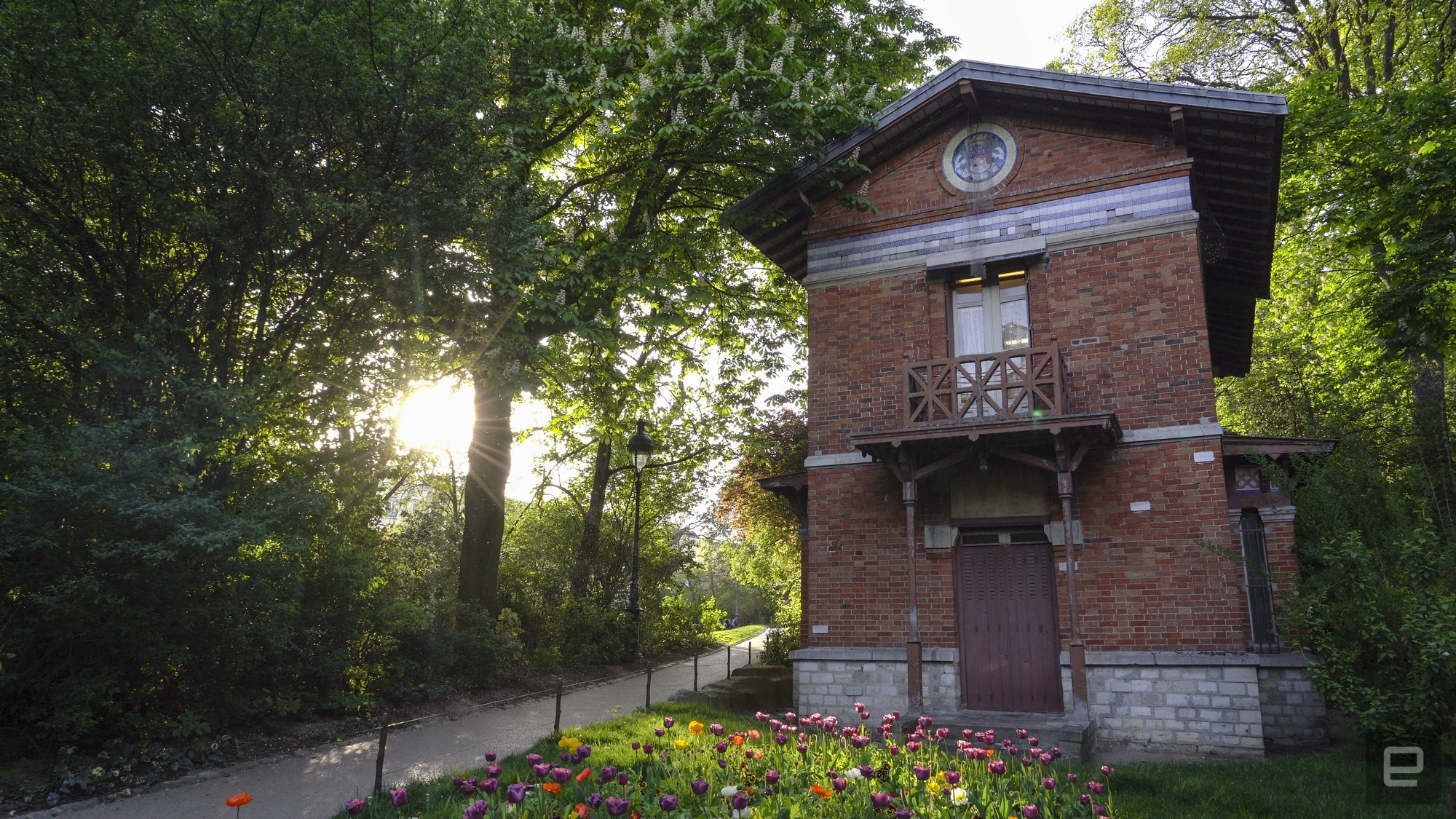
Frame grab from Sony A7 III 4K video
Engadget/Steve Dent
For video, the A7 III might be Sony’s best full-frame camera to date, at least until the A7S III comes around. The more expensive A7R III can only oversample an APS-C-size portion of the sensor, cropping to around 1.5x, which costs you wide-angle capability and shallow depth of field. (The A7R III, on the other hand, can read the full sensor with line-skipping, but that reduces sharpness.)
The A7 III, however, captures 4K video at 24fps from the entire 24.2-megapixel (6K) sensor, oversampling to 3,840 x 2,160 — exactly like the much more expensive A9. When you shoot at 30 fps, it takes a mild 1.2x crop, producing slightly less detailed footage with slightly enlarged depth of field. If you want to punch in more, you can also shoot with an APS-C portion of the sensor (a 1.5x crop).
For video autofocus, you can use the “Center Lock-on AF” to isolate a specific subject and let the algorithms track them, which they do very well. Finding the setting requires a lot of menu digging, however.
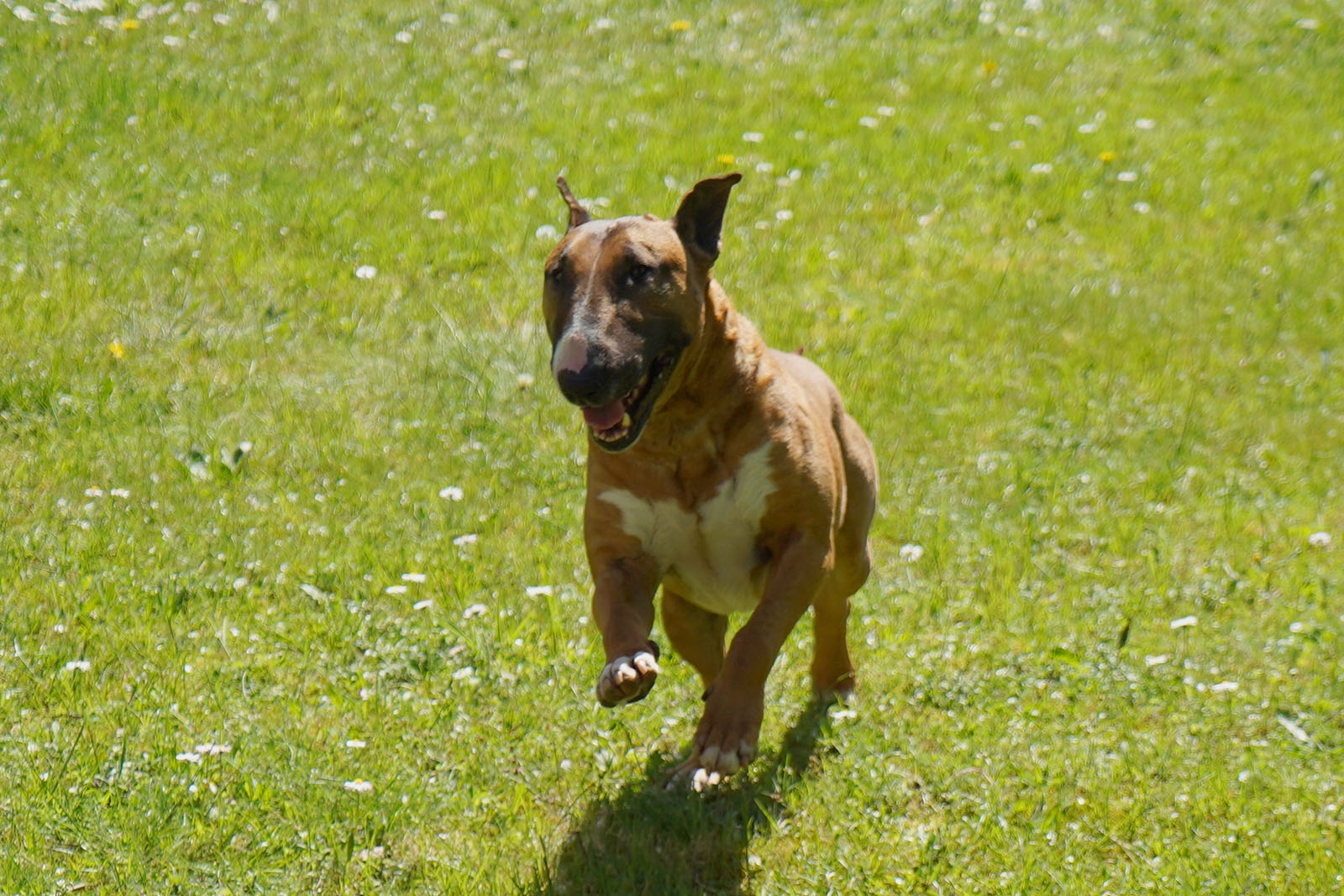
Spot autofocus works if you know where your subject will be, and for more unpredictable action, the “wide” setting will automatically find a subject and track his or her face, though it occasionally gets confused with multiple subjects in a scene. Overall, video AF is good, but not great, like the tap-to-track Dual Pixel AF system found on Canon models such as the EOS 5D Mark IV.
The A7 III’s five-axis image stabilization means you can shoot with a slightly slower shutter speed than with the A7 II and still get sharp images and video. I was able to reliably shoot still subjects at shutter speeds as low as 1/15 of a second, and I don’t have the steadiest hands. I found Fujifilm’s new system on the X-H1 to work slightly better, especially when shooting video, as it doesn’t overcorrect as much when you move the camera on purpose.
A few other points: Sony has a silent shutter mode that works at speeds down to 1/8000, which is not as quick as the 1/32,000 shutter speed of the X-H1. The A7 III feels solid and is weatherproofed to a degree, but not around the accessory ports and bottom, so you’ll need to handle it with some care in the rain.
Image Quality
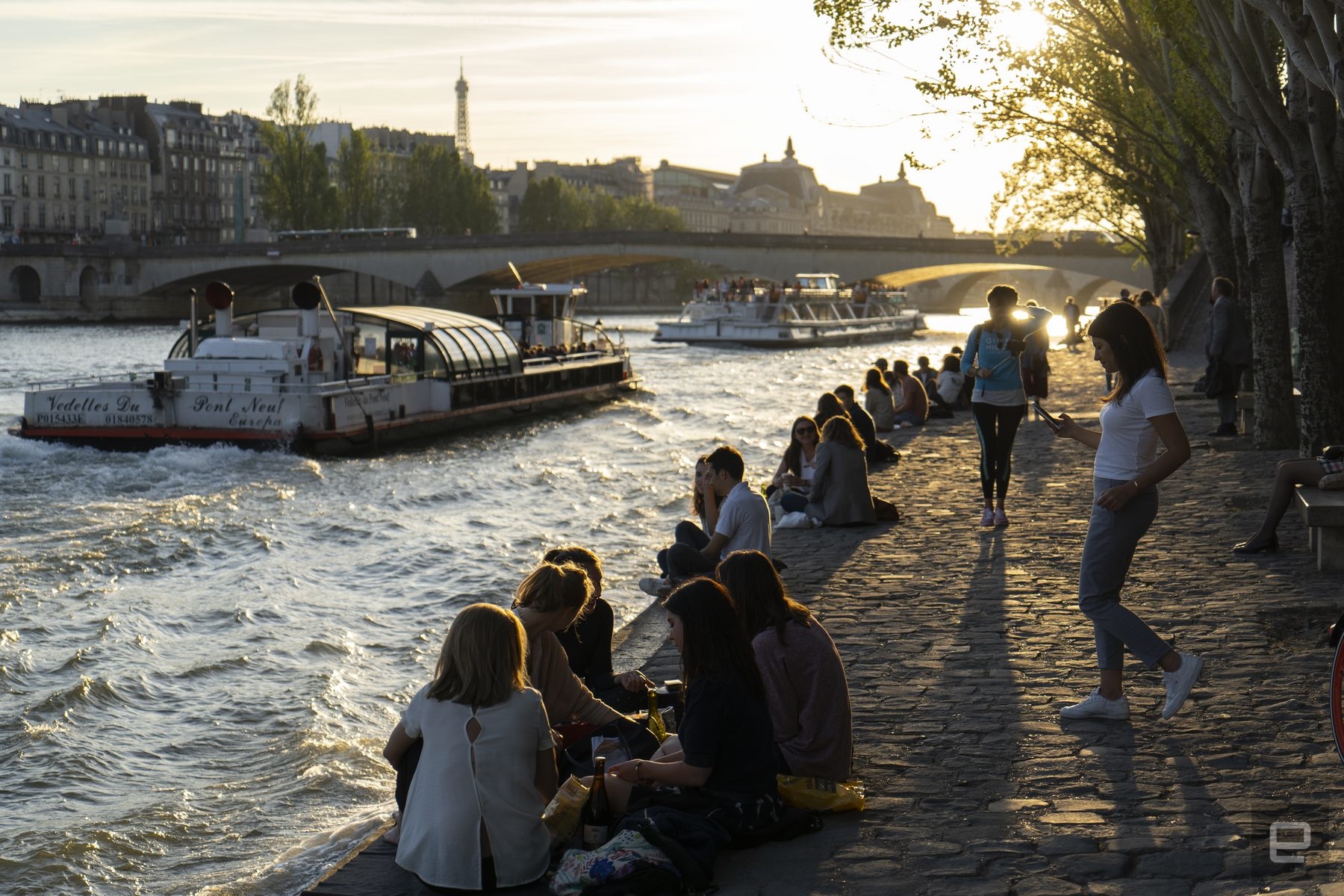
Engadget/Steve Dent
The A7 III is now one of the best-performing full frame cameras in low light, easily beating rivals like the Nikon D750. That’s all thanks to the Sony’s new back-side-illuminated (BSI) 24.2-megapixel sensor, with a dual-gain design. It effectively increases the amount of light available to the sensor beyond ISO 640 or so, reducing noise and retaining detail in dimly lit scenes. While Sony manufactures the sensors used by many other camera brands, it keeps the latest and greatest versions for itself.
I found high-ISO RAW performance impressive in shadow areas, especially when you push the exposure in post. My wife scoffed at one particularly dark high-ISO shot I took, but she was shocked when I turned it into a usable image by drastically bumping up the exposure in Lightroom. Suffice it to say, high-ISO capacity is one of the most useful features on a camera, solving lighting problems for photos and video alike.
The A7 III’s maximum image resolution is nearly half that of the A7 III, but I never felt pixel-deprived. The A7 III has a mild low-pass (anti-aliasing) filter — something that could have made images slightly less sharp — but it produces crisp photos and video, and I didn’t notice any excessive moire or aliasing issues, either.
Gallery: Sony A7 III image gallery
Sony claims 15 stops of dynamic range for the A7 III, surpassing just about every DSLR or mirrorless camera on the market. In practical terms, that makes RAW images easy to manipulate, even with under- or over-exposed images. You can dig tons of detail out of shadows without excessive noise, or dial back whites to extract more detail in sun-dappled scenes.
Skin tones also finally look natural when it comes to JPEG capture on the A7 III. Colors are generally more accurate than ever, though yellows and greens are still shifted a bit to the blue side. In low light, colors are a bit warmer — exactly the opposite of what I saw on the X-H1, and preferable, in my opinion. Sony handles JPEG noise reduction and sharpening better than any camera maker, especially in detailed image areas.
Video is pin-sharp, with a shallow depth of field that’s ideal for creating a cinematic look. You can also shoot 1080p at up to 120 fps using the full sensor. That’s a pretty nice combination — l found that shallow depth of field married with slow-mo can yield some pretty artistic effects. Some cameras, though, like Panasonic’s GH5s, can shoot at up to 192 fps, albeit with a smaller sensor.
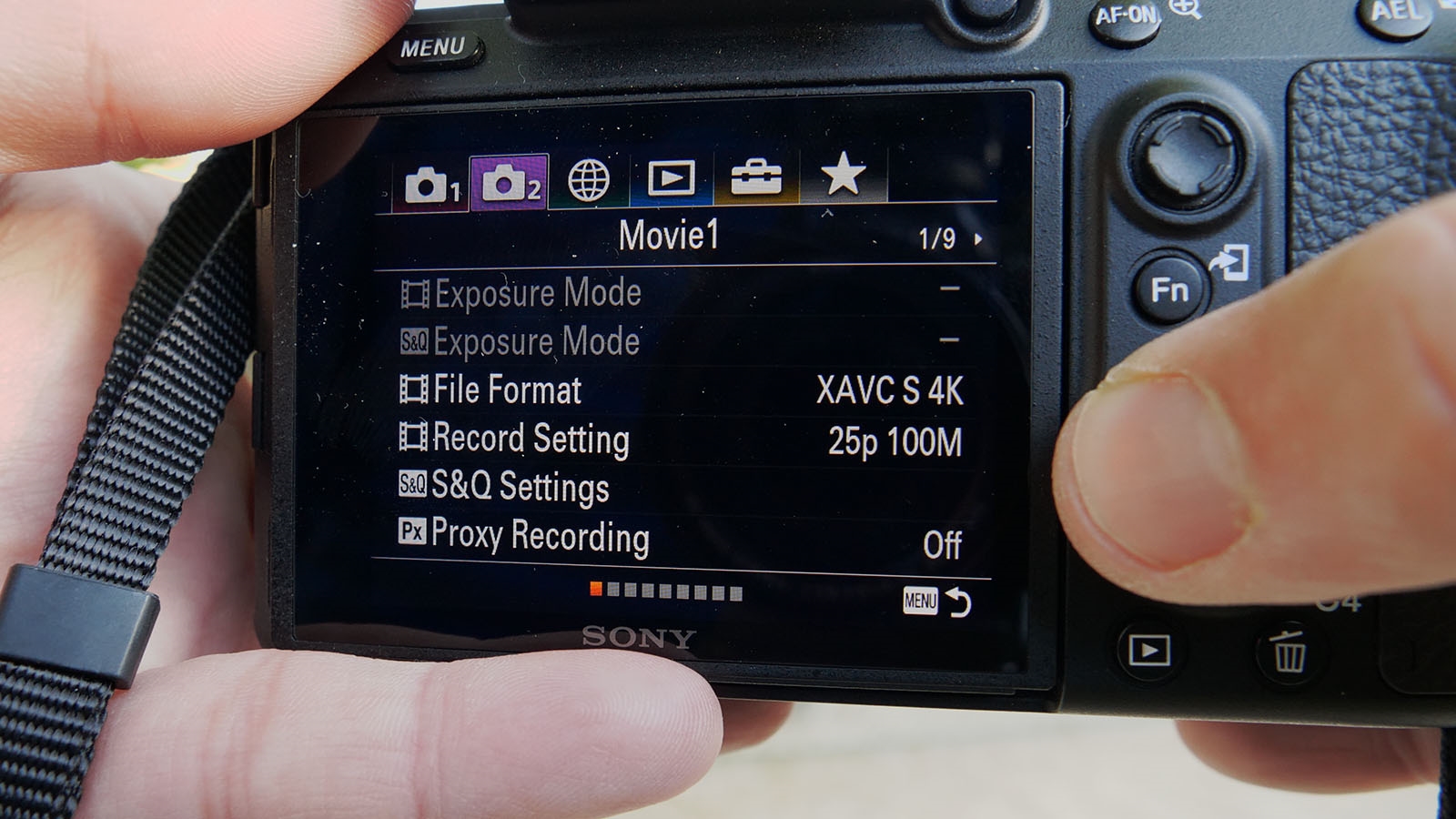
Sony A7 cameras have had a bad rep for a “jello” or rolling shutter effect that can skew video, but the A7 III handles it much better than any previous model in the series. Unless you’re doing whip pans or other quick moves, it’s almost never an issue.
To maximize dynamic range for HDR video, the A7 III comes with several free “log” shooting profiles. However, it can’t output 10-bit video (with a billion colors), either to the memory card or externally via the micro HDMI port. Rather, you’re limited to a relatively low 4:2:0 8-bit color output internally, and a bit better 4:2:2 8-bit gamut via HDMI.
That means you don’t have as rich a color palette to work with as you do with Panasonic’s 10-bit, 4:2:2-capable GH5 and GH5s. Sony also limits the bit rate to 100 Mbps, which is a quarter the maximum data speed on the GH5/GH5s and half that of Fujifilm’s X-H1. However, the smaller file sizes don’t affect detail as much as you’d expect and, overall, video quality is excellent.
Wrap-up
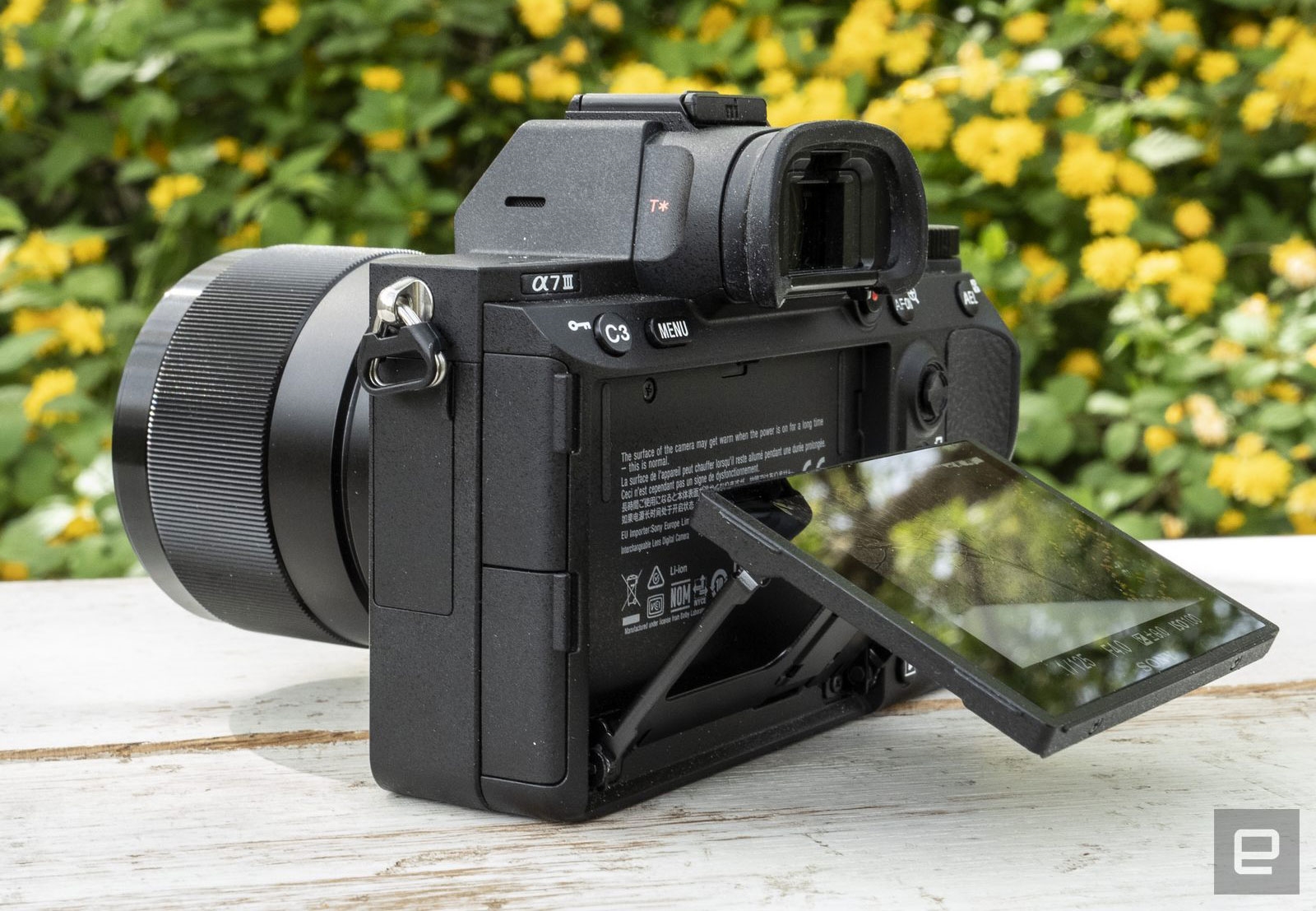
The Sony Alpha A7 III might not have the highest resolution, fastest shooting speed or best video quality. But by borrowing features from the flagship A9 and A7R III, it’s uniformly excellent at everything.
Shooting speeds are quick enough for nearly everyone, autofocus performance is fast and accurate, the full-frame, supersampled 4K video is tack-sharp, and detailed, accurate images can be gathered even in very low light with class-leading dynamic range. Handling is an intangible quality that doesn’t show up on the spec sheet, but the Sony A7 III felt great and is the easiest-to-use camera I’ve tried.
My complaints are minor: The EVF and rear display fall short of similarly priced rivals, video quality is limited to 8-bit and 4:2:0 internal recording, and it’s not quite as rugged and weatherproof as other cameras in this price category. The A7 III is occasionally complicated to use, and the PlayMemories smartphone app still needs an overhaul. Finally, as with the entire A7 series, most compatible FE full-frame lenses are expensive.
However, for $2,000, the A7 III is peerless. The $1,800 Nikon D750 DSLR offers a full-frame sensor and similar resolution, but it’s getting pretty old, can shoot only at 6.5 fps, lacks 4K video and has a far less sophisticated autofocus system. Much of the same applies to Canon’s $1,900 EOS 6D Mark II, but at least that model is more recent.
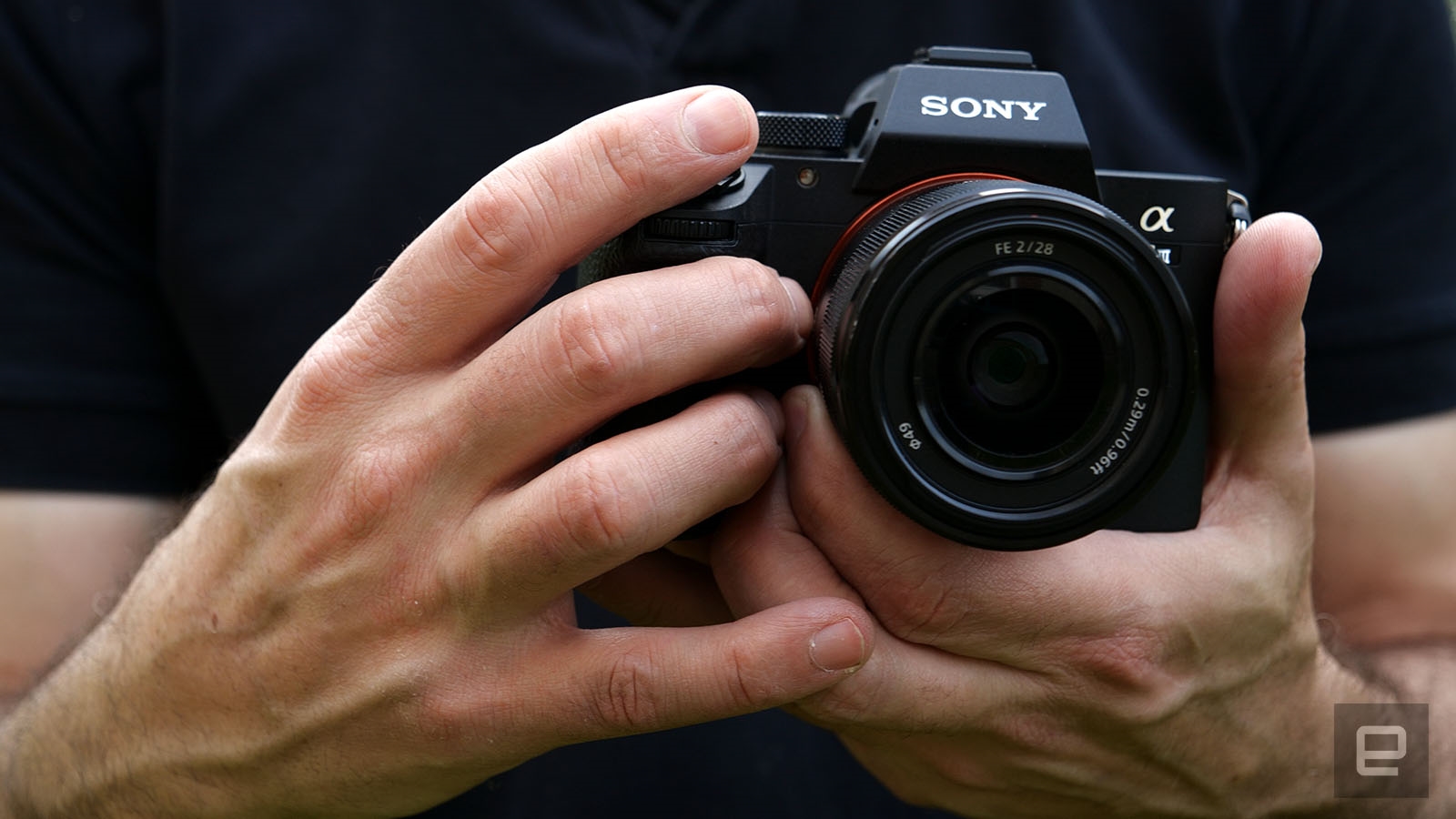
If you want 4K video, you’ve got to move down to a smaller sensor and forgo shallow depth of field and low-light performance. Options in that price range include Panasonic’s $2,000 Micro Four Thirds GH-5, or the $2,500 GH5s if you want to spend a bit more. The $1,900 APS-C Fujifilm X-H1 is another good option, with higher-resolution DCI 4K (4,096 x 2,160) video, but it lacks the superb low-light performance of the A7.
Sony’s main competition might be itself. For the same price, the last-gen A7R II gives you a boost in resolution to 42.4 megapixels, and you still get (slightly less sharp) 4K video, 5-axis stabilization and other similar features. For better video and low-light performance, but much lower resolution, the $2,200 A7S II is another good choice.
But frankly, unless you really need a specific feature like high resolution, the A7 III offers the best-rounded feature set you can get for $2,000. Sony might call it the “basic” model of the A7 lineup, but it’s possibly the best camera on the market at any price.
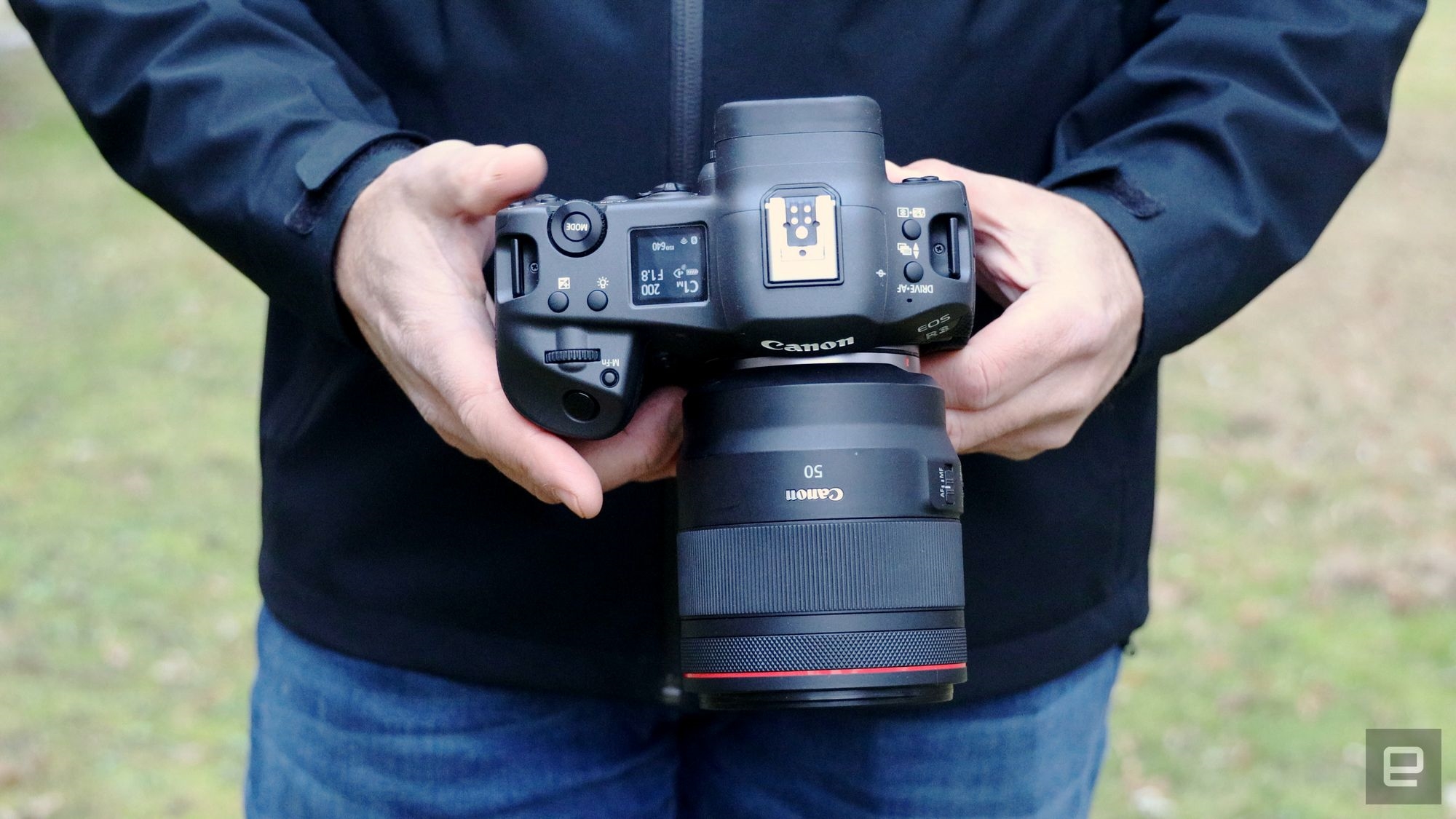
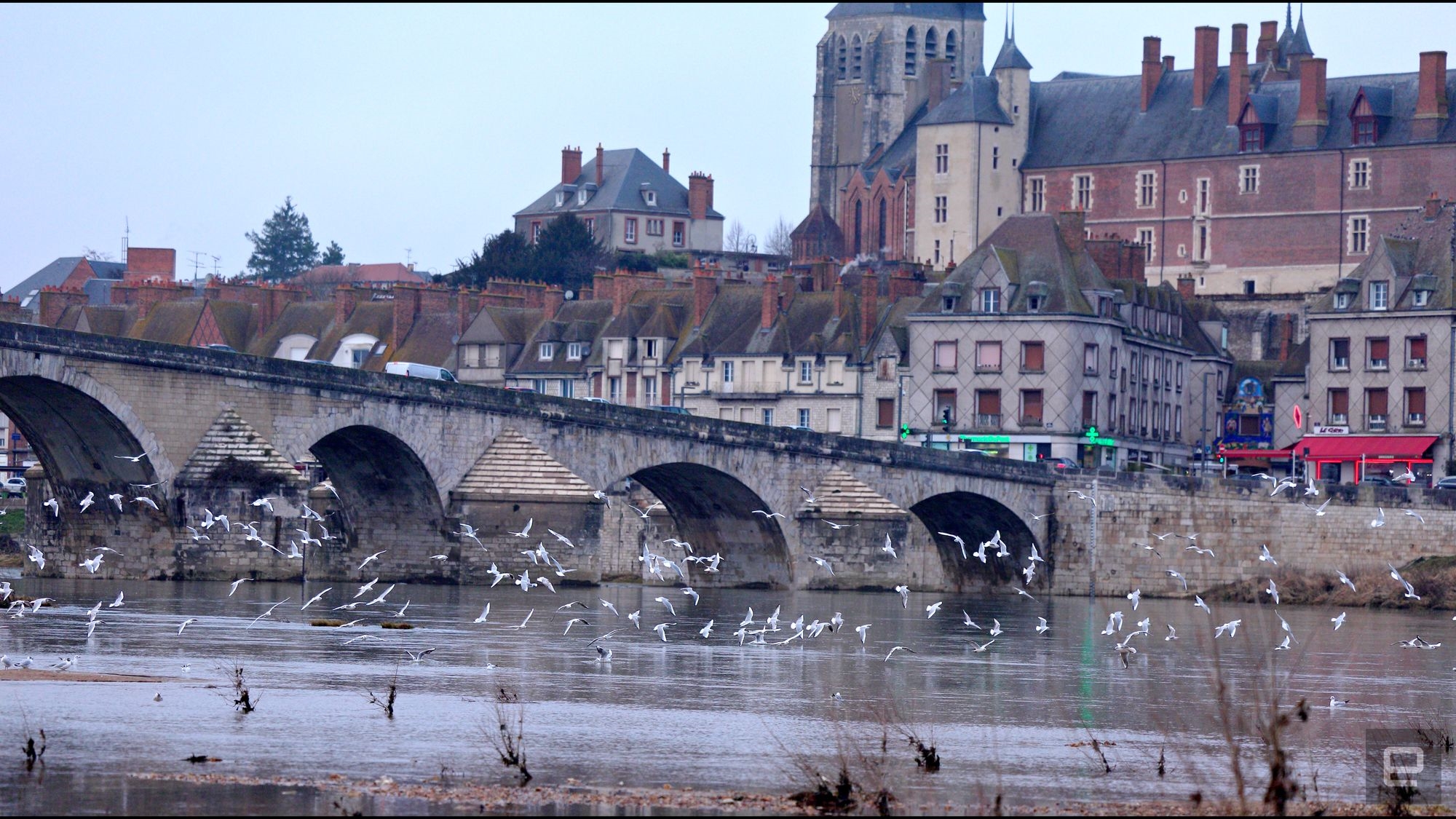
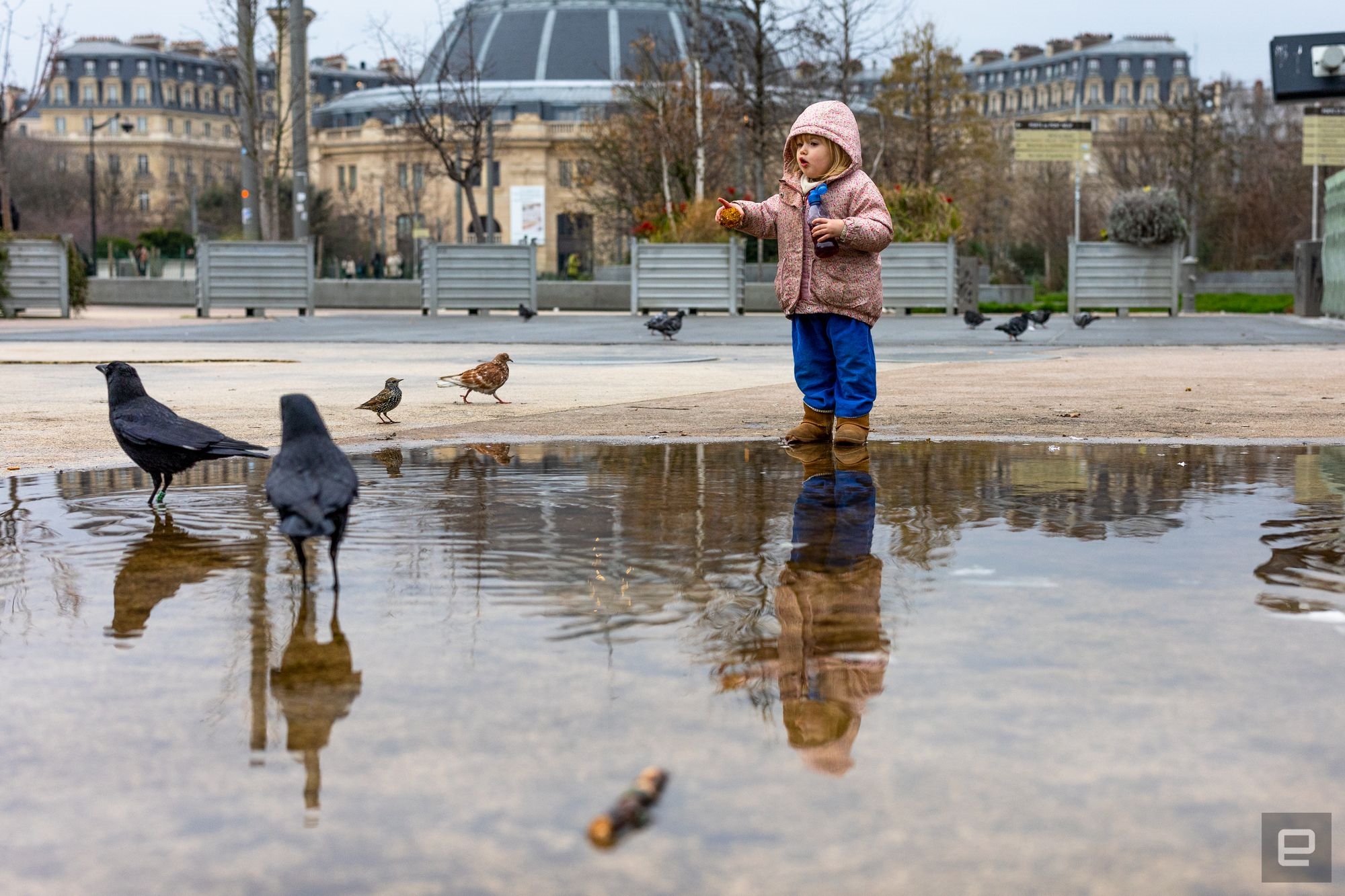
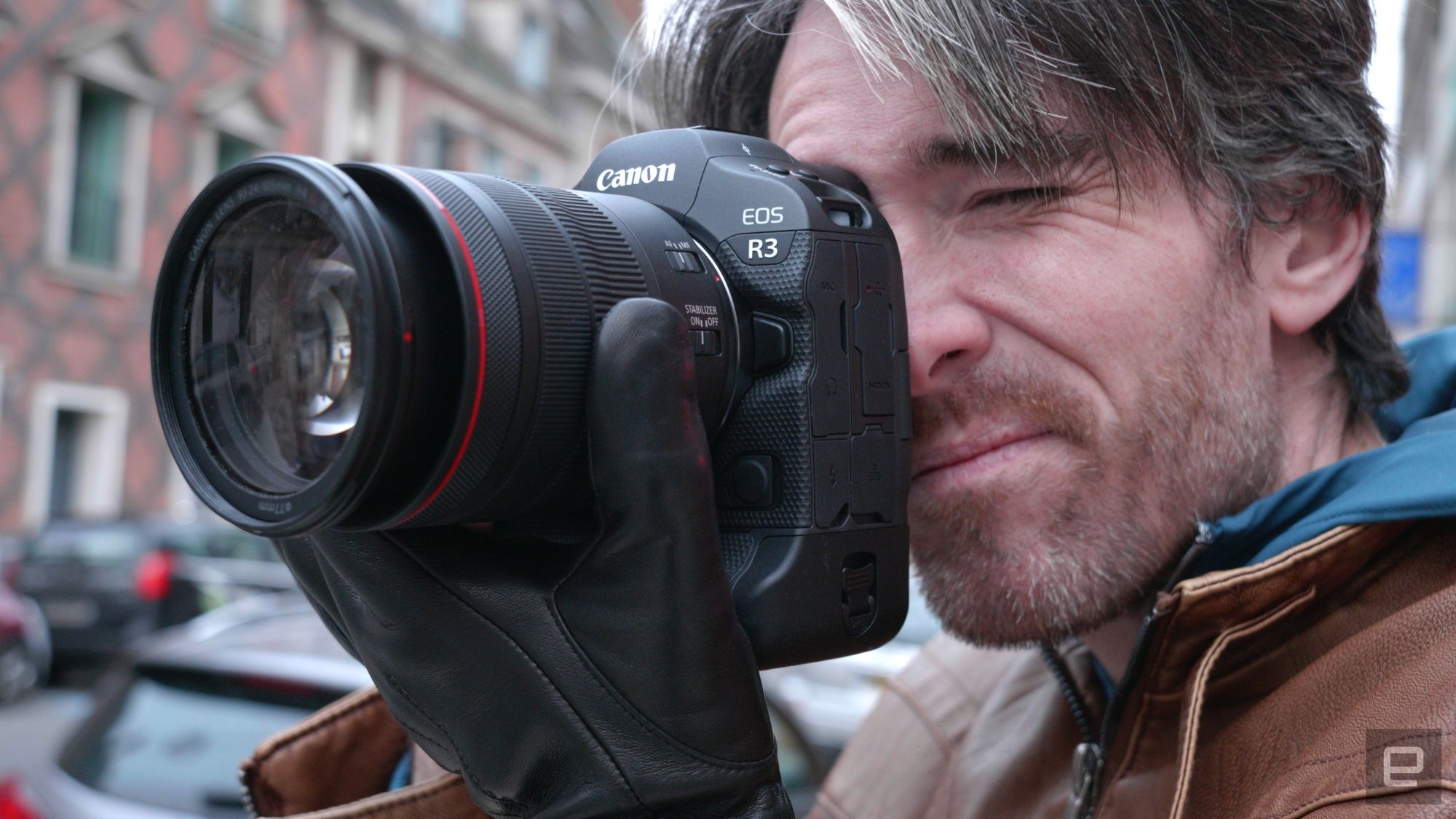
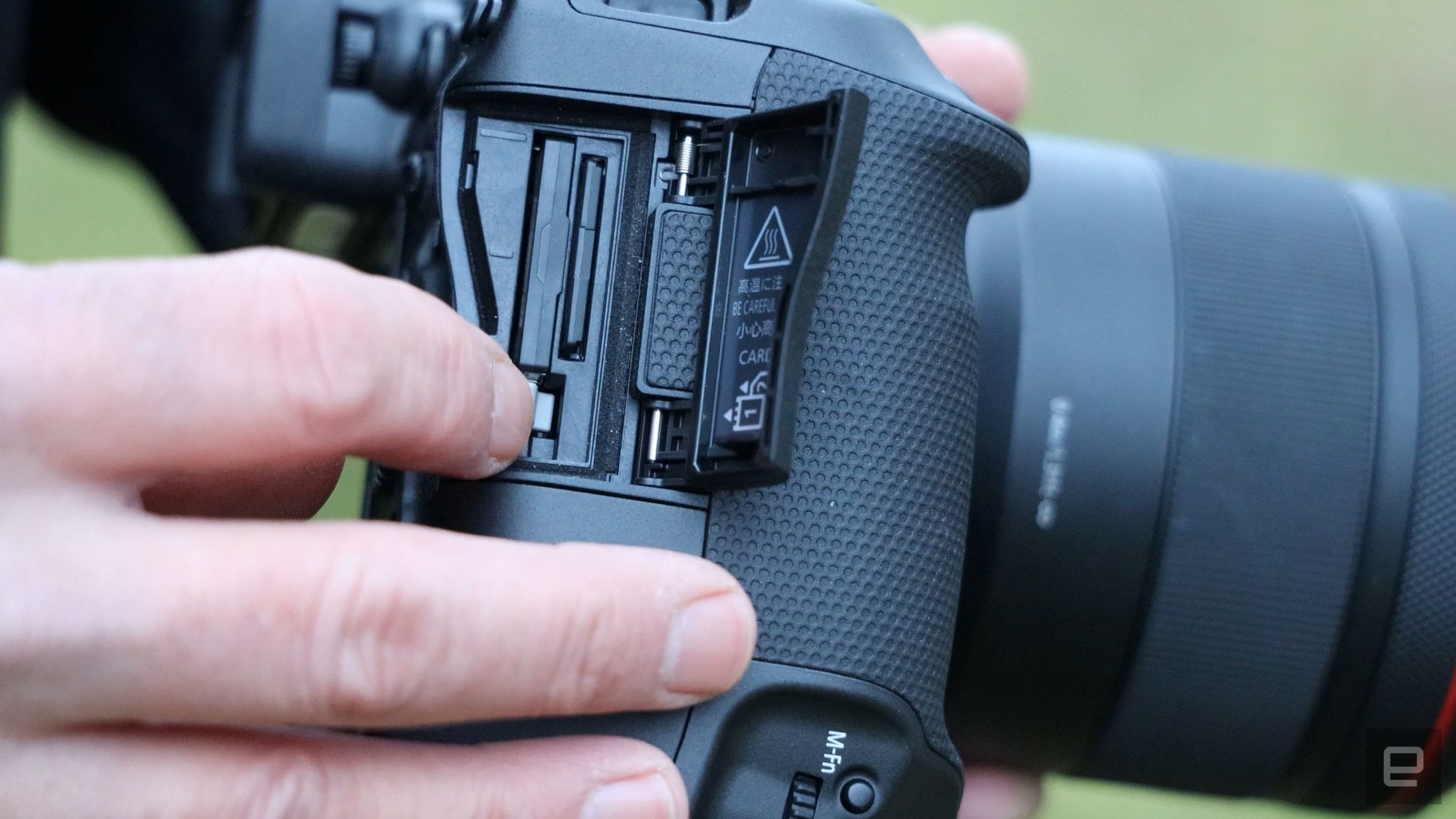
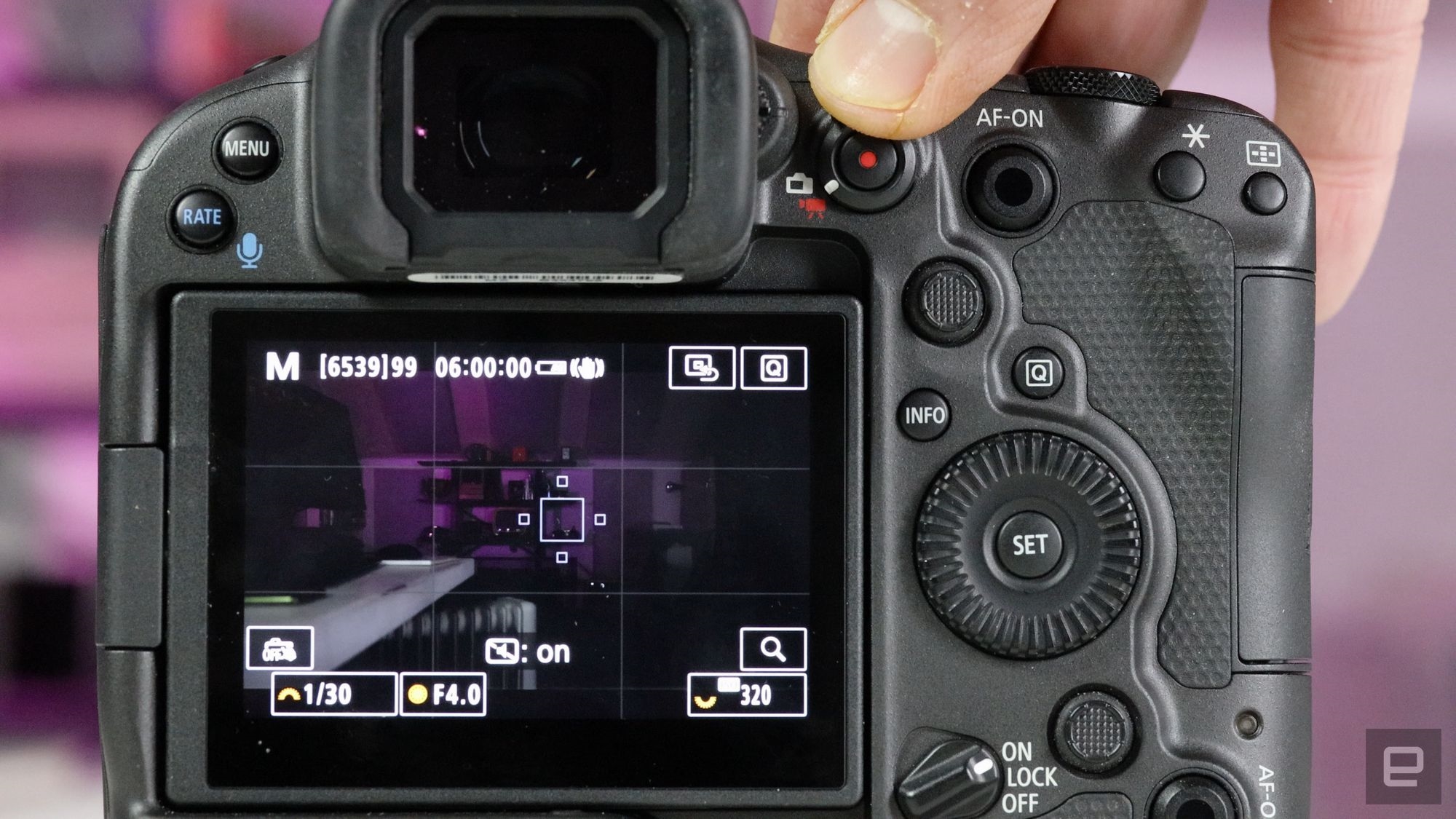
(58)

